Starship and Super Heavy: SpaceX's Mars-Colonizing Vehicles in Images
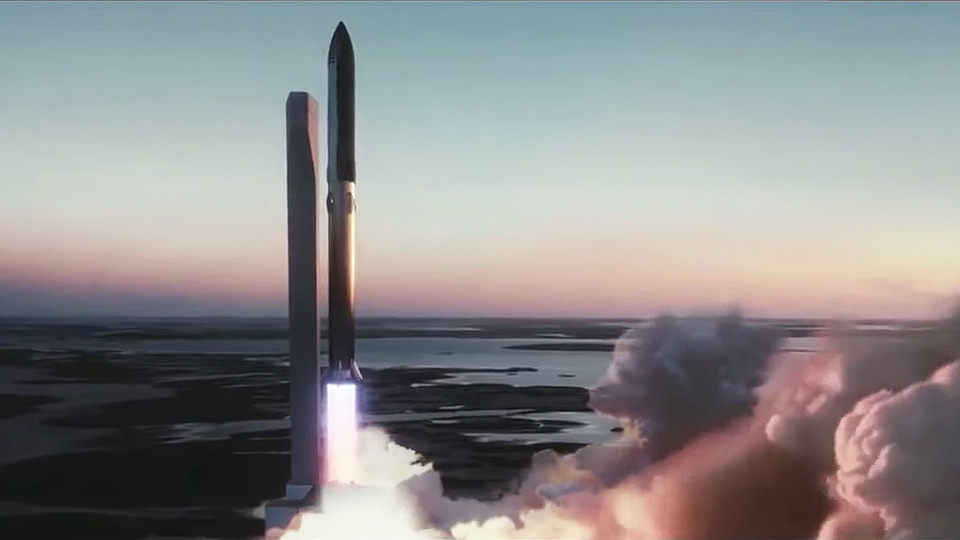
Starship and Super Heavy
Elon Musk founded SpaceX in 2002 primarily to help humanity settle Mars. Here's a look at the gear the company is developing to do just that — a giant rocket called Super Heavy and a 100-passenger vehicle called Starship. Above, a still from a SpaceX animation shows Starship launching on a Super Heavy rocket.
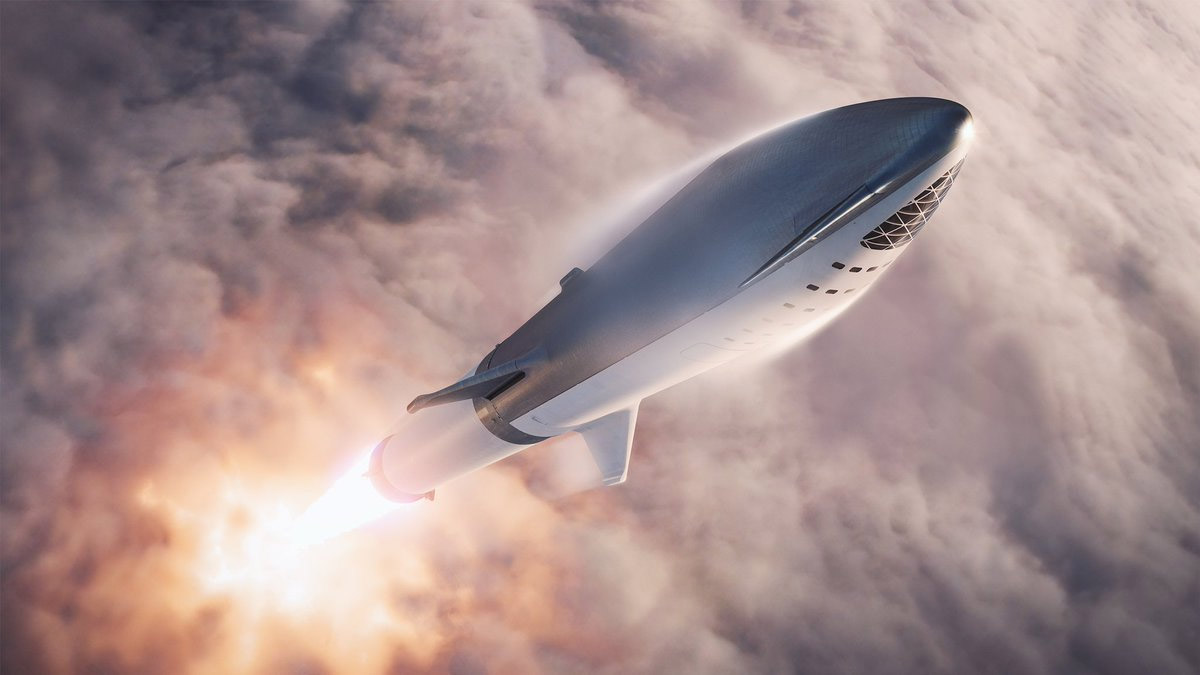
"BFR" in 2018
Starship and Super Heavy have gone by several names. When first unveiled in 2017, the duo was known as the Interplanetary Transport System. A year later, Musk changed the name to BFR, short for "Big Falcon Rocket" (or "Big F***ing Rocket). In November 2018, it was renamed again to "Starship."
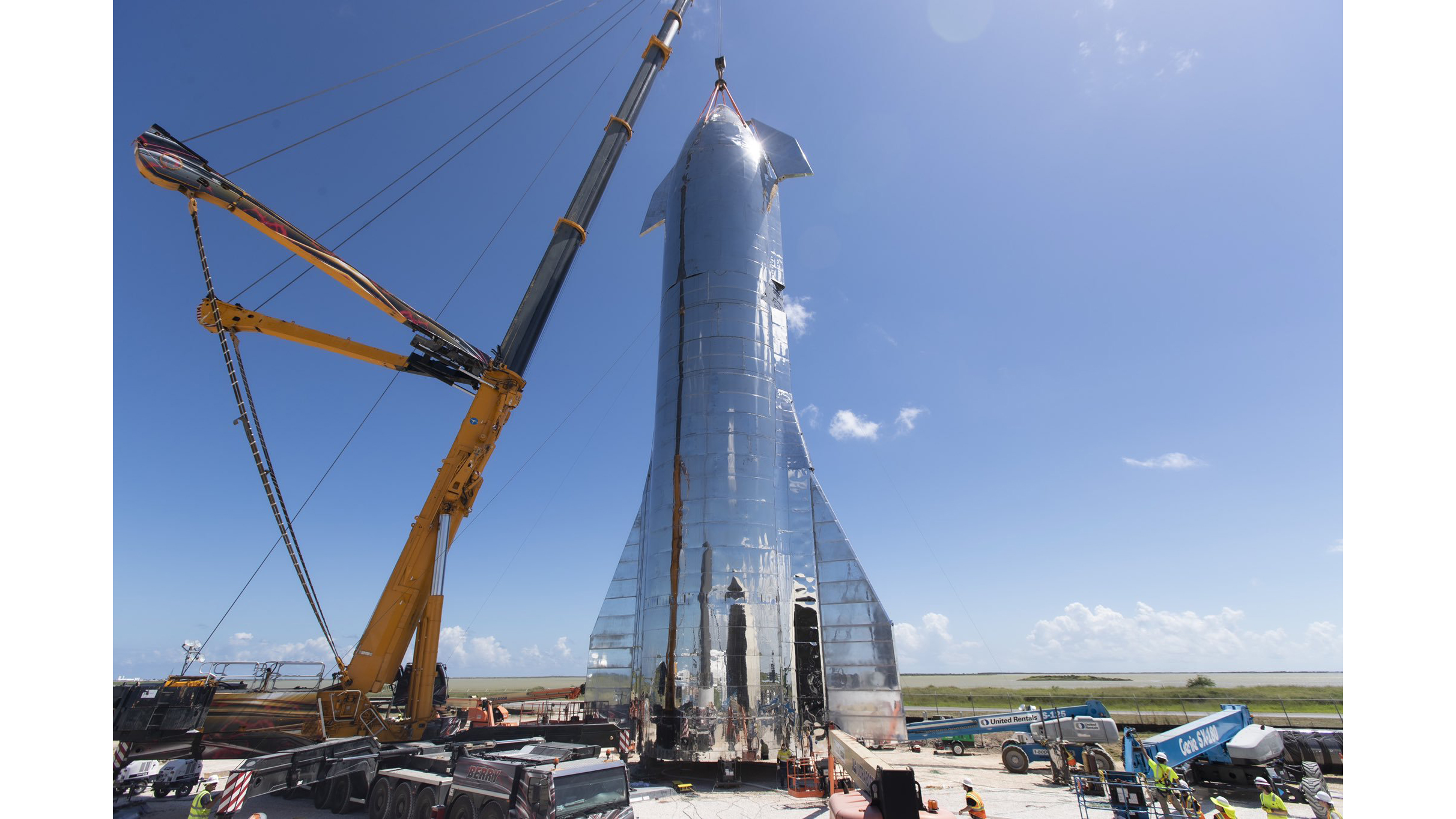
Starship Mk1 Construction Complete
SpaceX founder and chief executive Elon Musk tweeted this photo of the newly assembled Starship Mk1 prototype on Sept. 27, 2019.
Full Story: SpaceX Finishes Assembling New Starship Prototype (Photo)
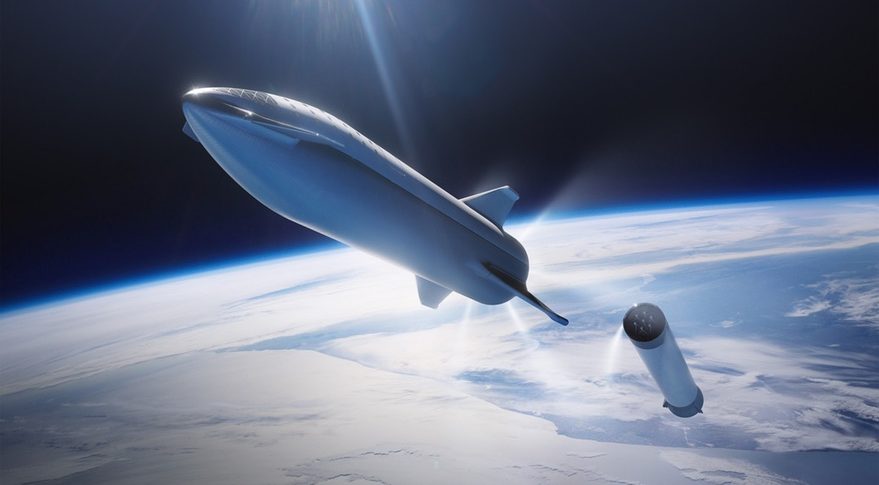
Starship Separating from Super Heavy
An artist's illustration of Starship separating from its Super Heavy rocket after launch.
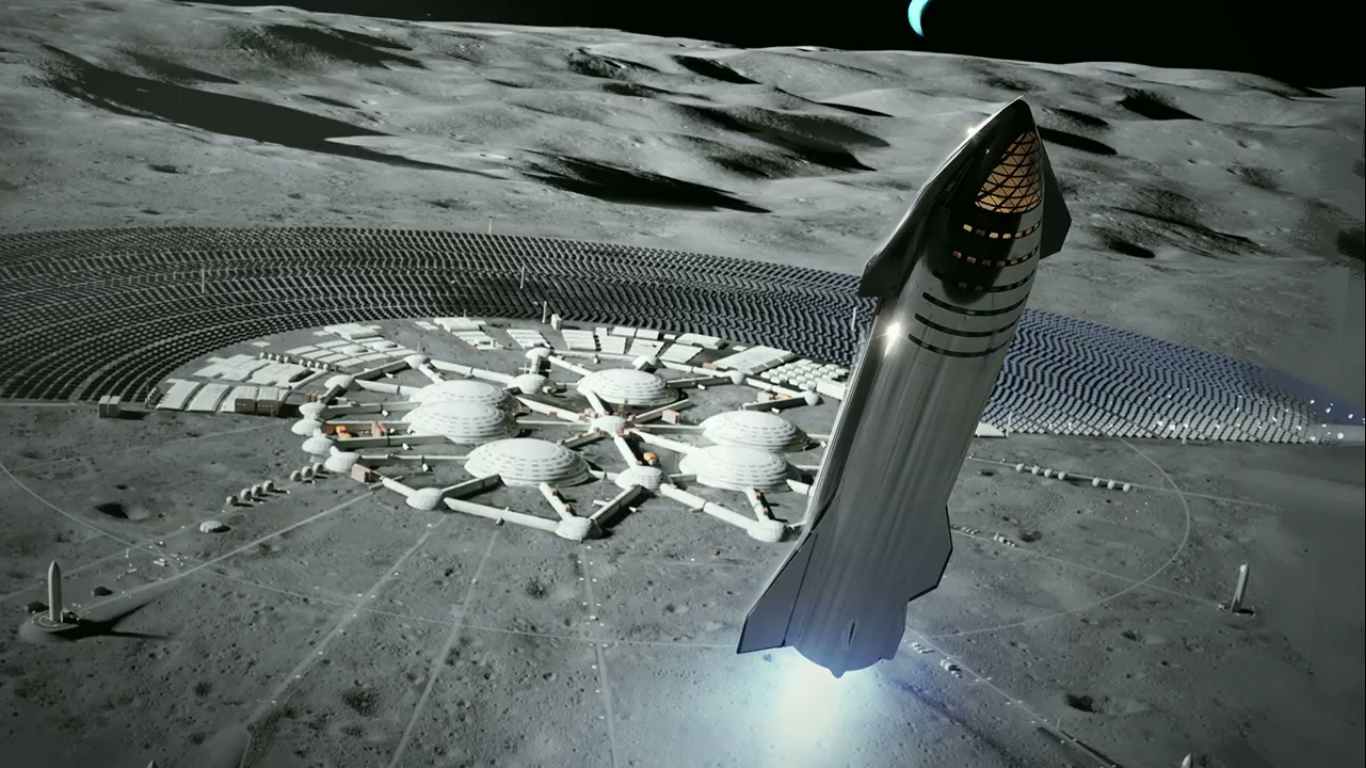
To the Moon!
An artist's illustration of SpaceX's Sharship with a moon base. Elon Musk said that Starship could help build a human outpost on the moon.
Related: Elon Musk Unveils SpaceX's New Starship Plans for Private Trips to the Moon, Mars and Beyond
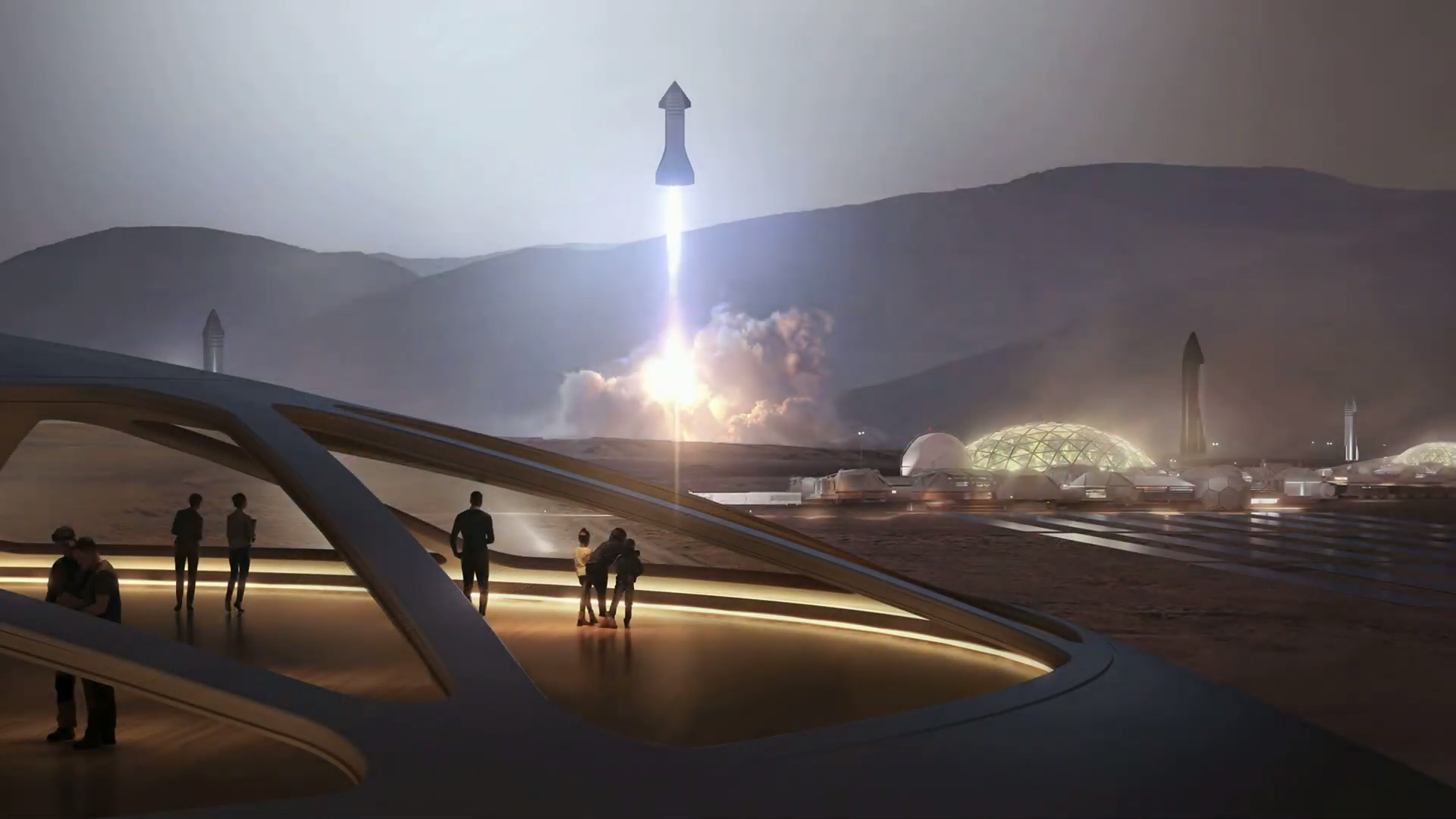
Starship Missions to Mars
Starship could provide the transportation infrastructure necessary to build the first human outpost on Mars, Elon Musk said.
Related: How SpaceX's Starship Will Help Establish a Mars Base
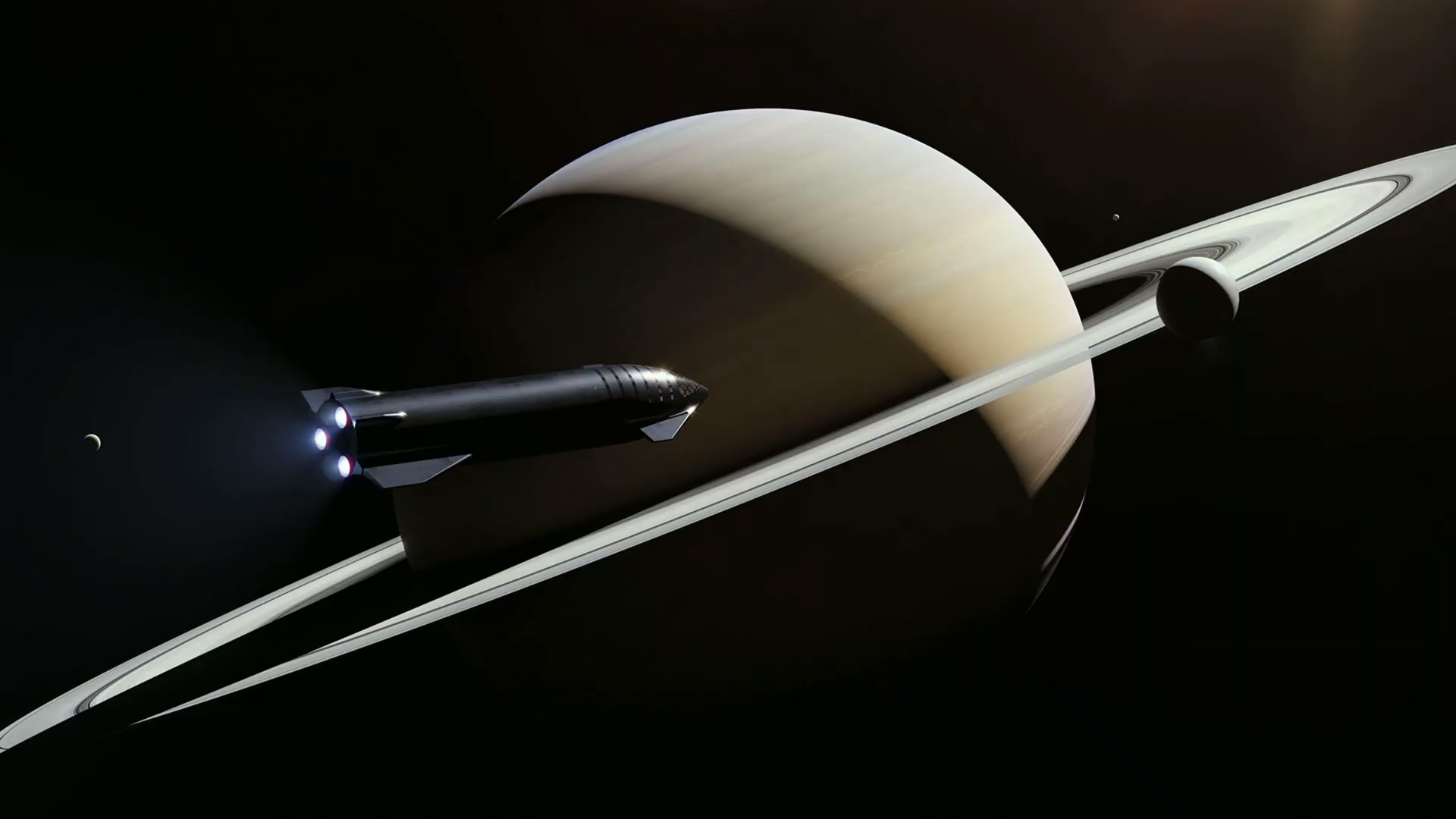
Starship in Deep Space
Starship isn't just for mission to the moon and Mars. It could someday even launch human missions farther out into the solar system to planets like Saturn.
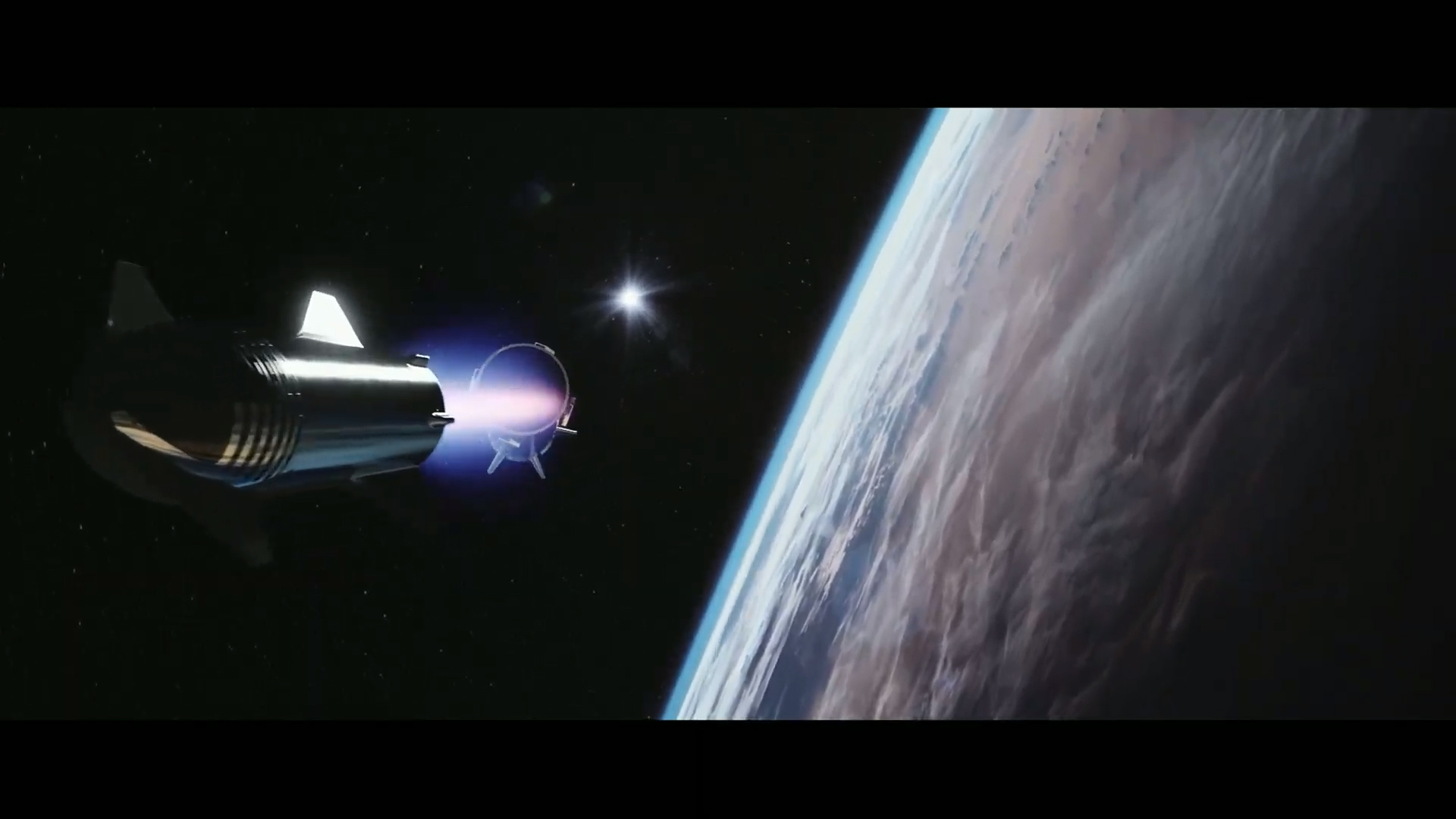
Stage Separation
A still from SpaceX's new Starship animation shows the spacecraft separating from the Super Heavy rocket after liftoff.
Related: Elon Musk Unveils SpaceX's New Starship Plans for Private Trips to the Moon, Mars and Beyond
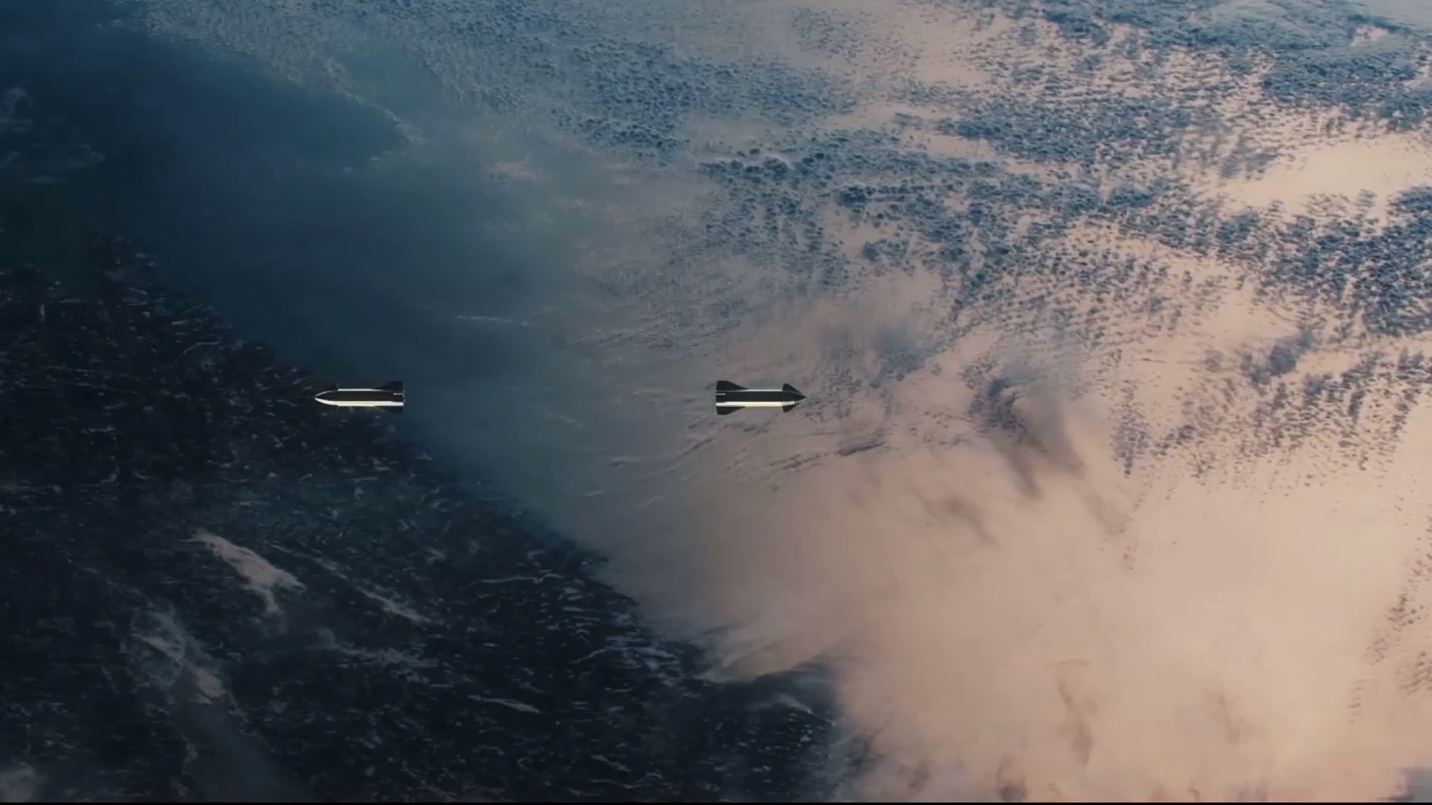
In-Orbit Refueling
One of the key elements of SpaceX's Starship plan is the ability to refuel the spacecraft in orbit. After launching, Starship will rendezvous with a tanker in orbit and refuel before heading out to Mars or other deep-space destinations. You can see how it's done in this SpaceX animation.
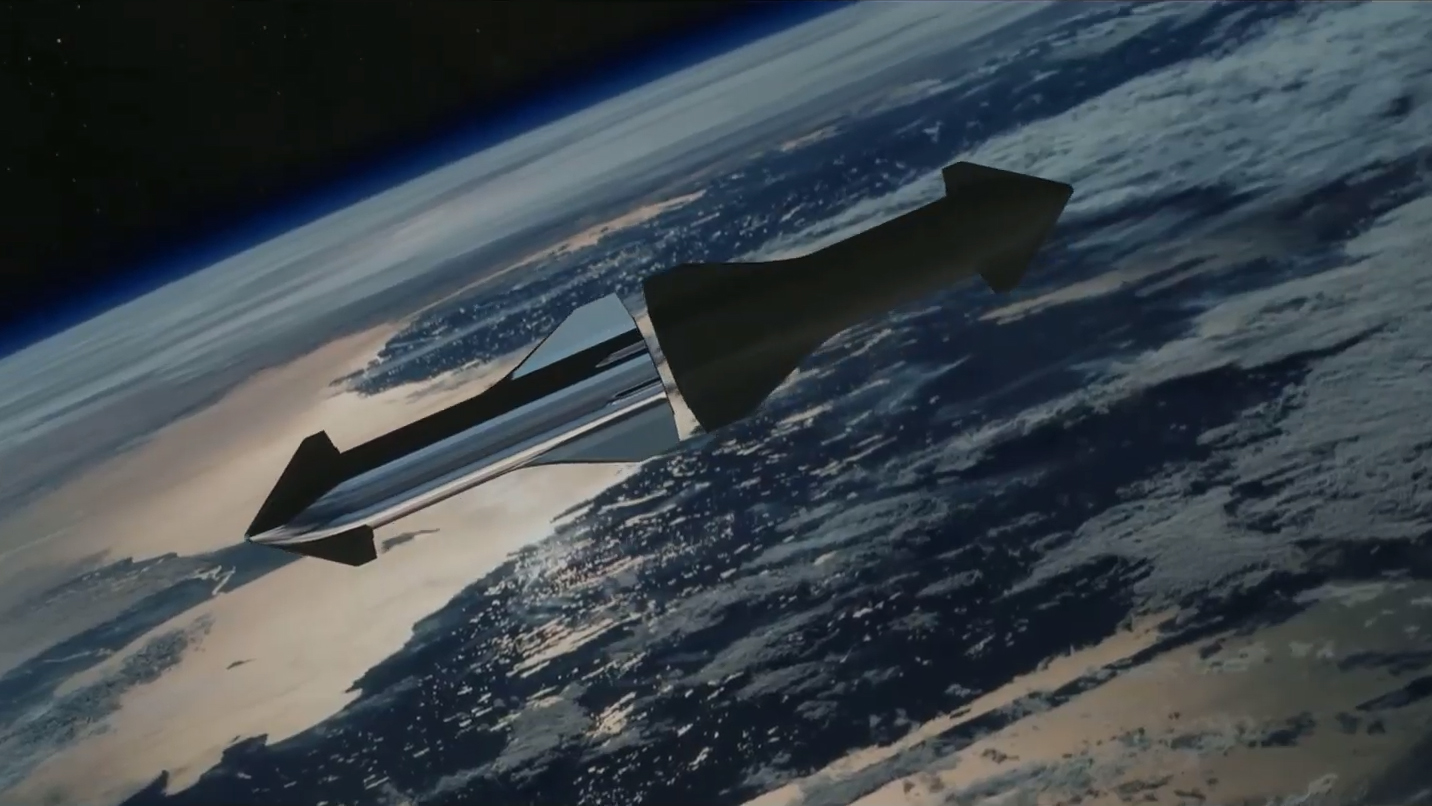
In-Orbit Refueling
One of the key elements of SpaceX's Starship plan is the ability to refuel the spacecraft in orbit. After launching, Starship will rendezvous with a tanker in orbit and refuel before heading out to Mars or other deep-space destinations. You can see how it's done in this SpaceX animation.
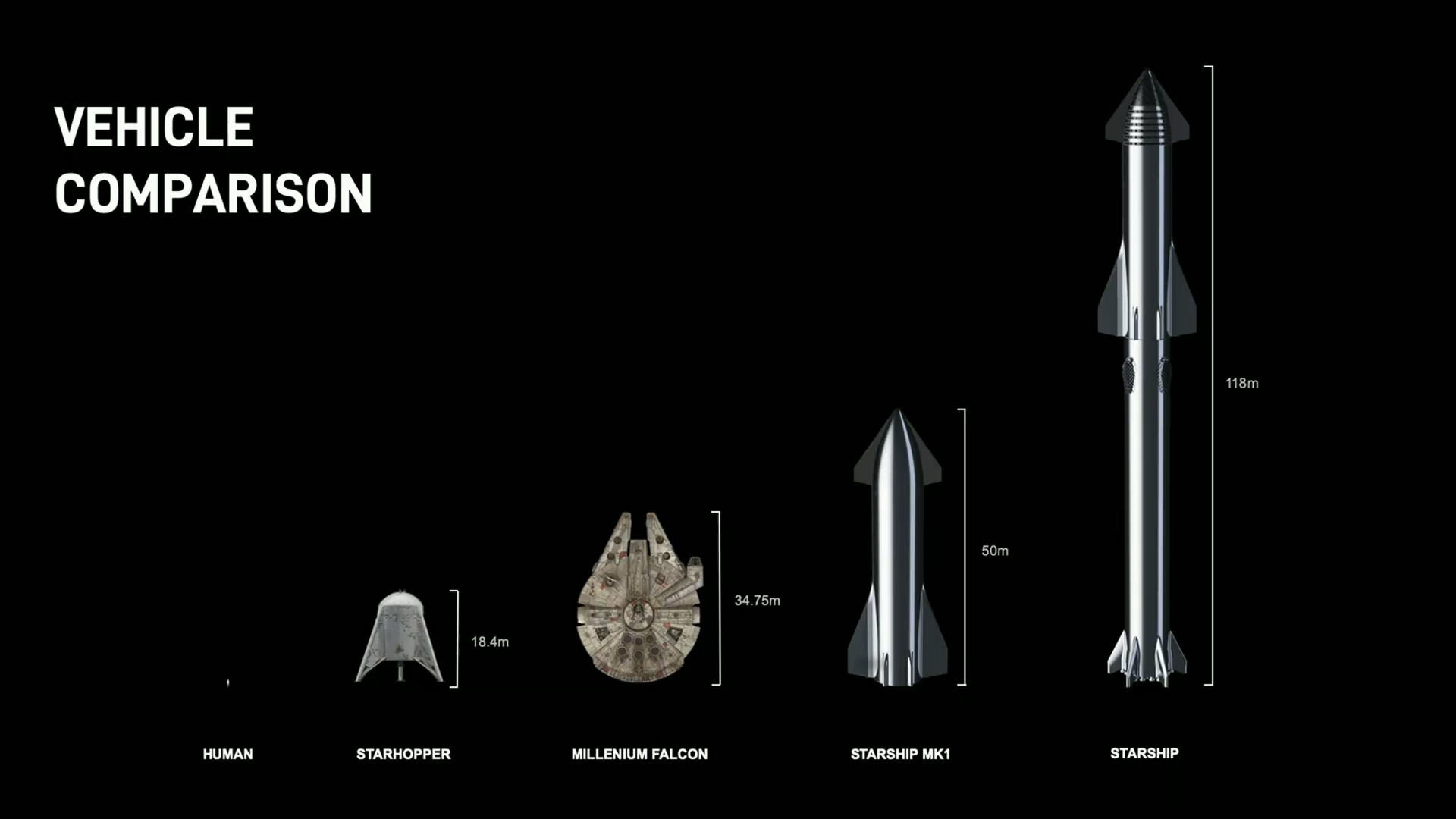
How Starship Stacks Up
This SpaceX infographic shows how enormous the finalized Starship and the Super Heavy will be compared to to a human, the Starship Mk1 prototype, the Starship Hopper test vehicle ... and the Millennium Falcon.
Video: SpaceX Starship vs. Millennium Falcon in Size Comparison - Elon Musk Explains
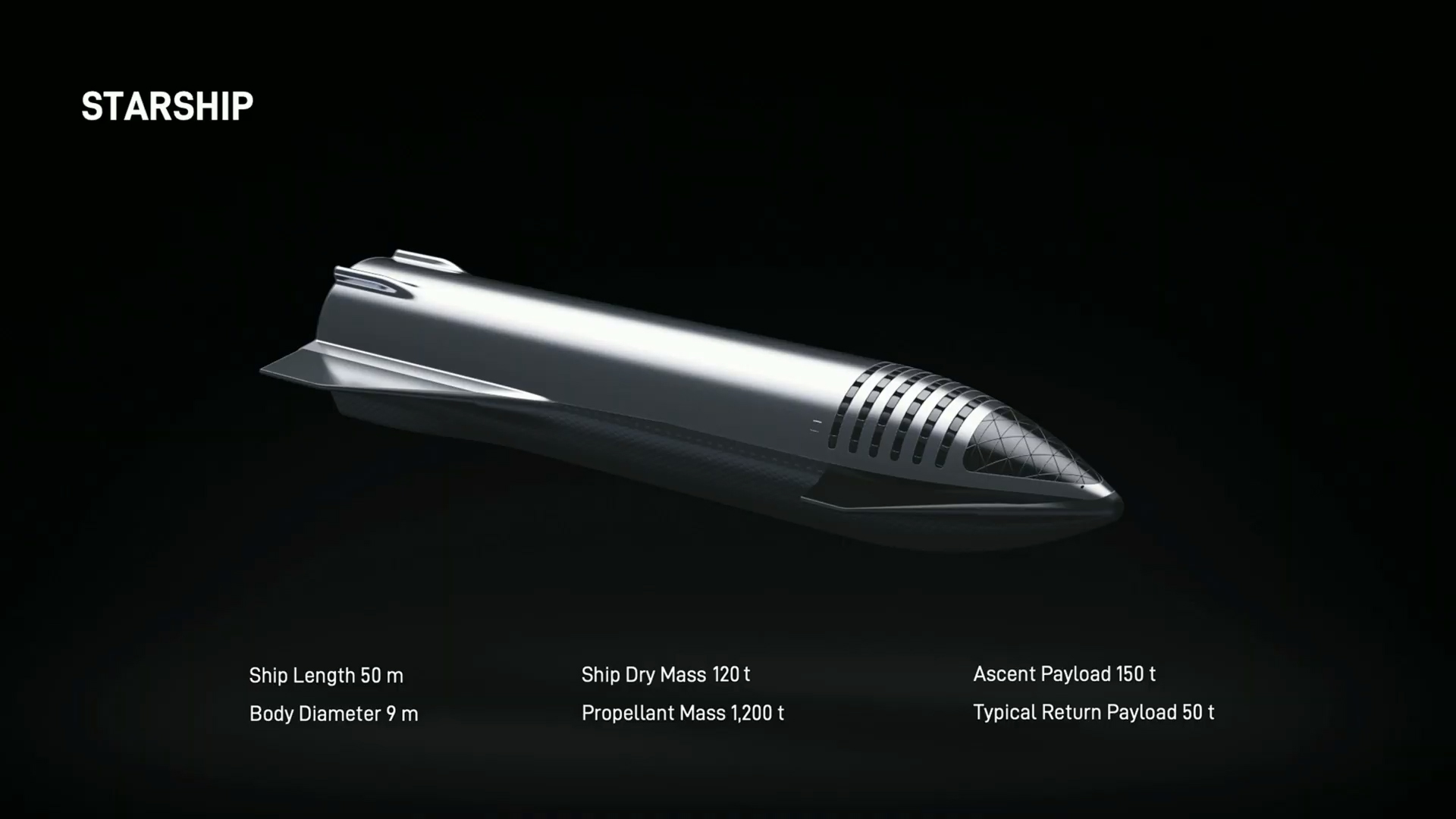
Sizing Up Starship
The Starship is 164 feet (50 meters) long with a diameter of 30 feet (9 meters). Its dry mass is approximately 120 tons. It can launch payload of up to 150 tons and return to Earth with a 50-ton payload.
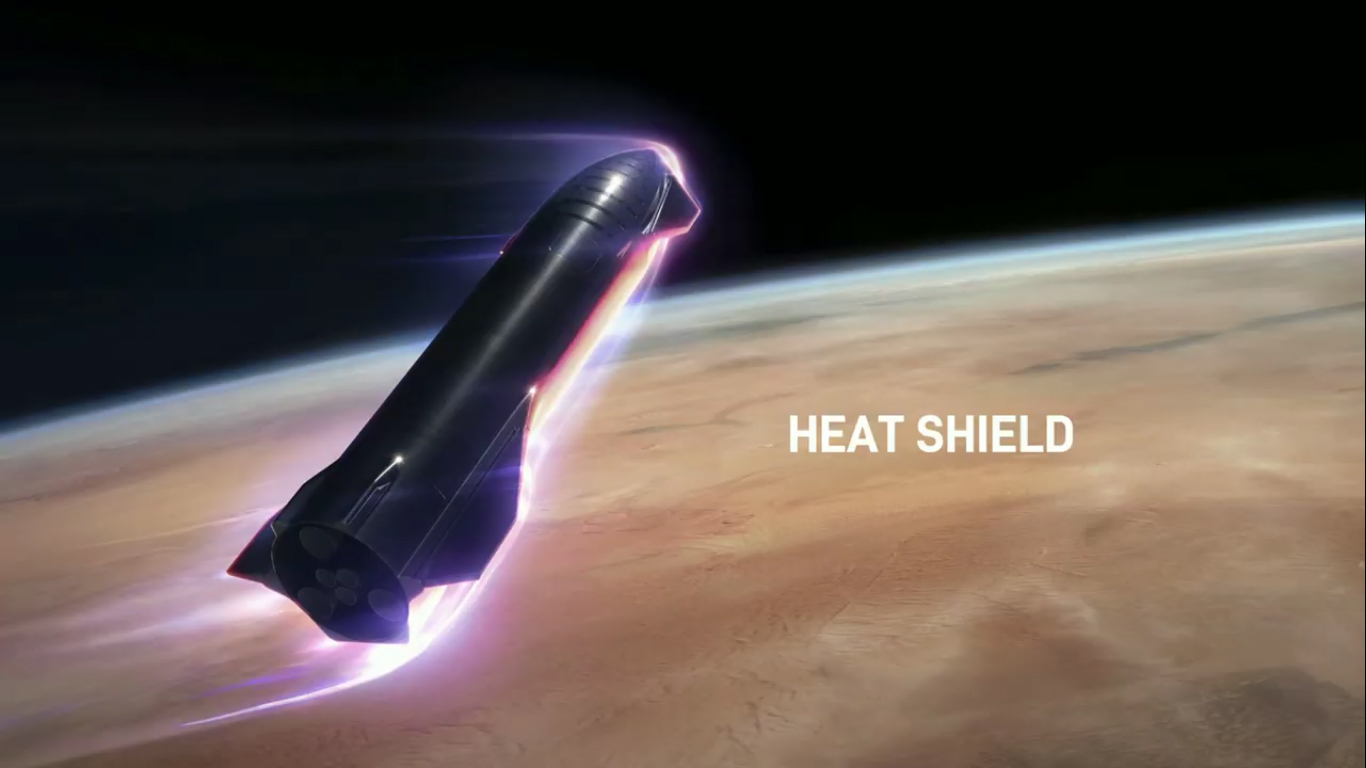
The Heat Shield
To protect passengers from extreme temperatures during entry into the atmospheres of Mars or Earth, Starship has a heat shield made of stainless steel and ceramic tiles.
Video: Space Starship's 5 Engines and Heat Shield - Elon Musk Explains
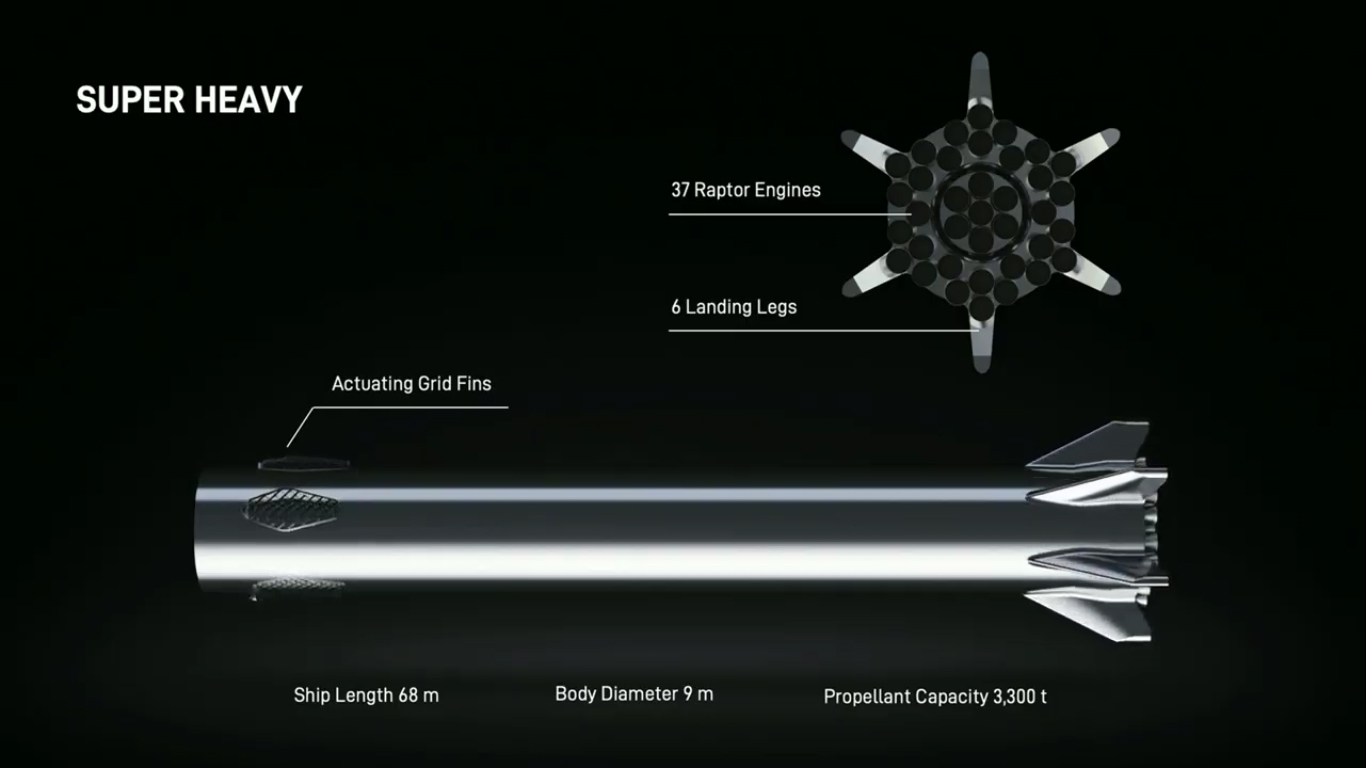
The Super Heavy Rocket
The Super Heavy rocket that will launch Starship will have 37 Raptor engines and six landing legs. It's about 223 feet (63 meters) tall.
Video: How Will SpaceX's Starship Land? Elon Musk Explains Design
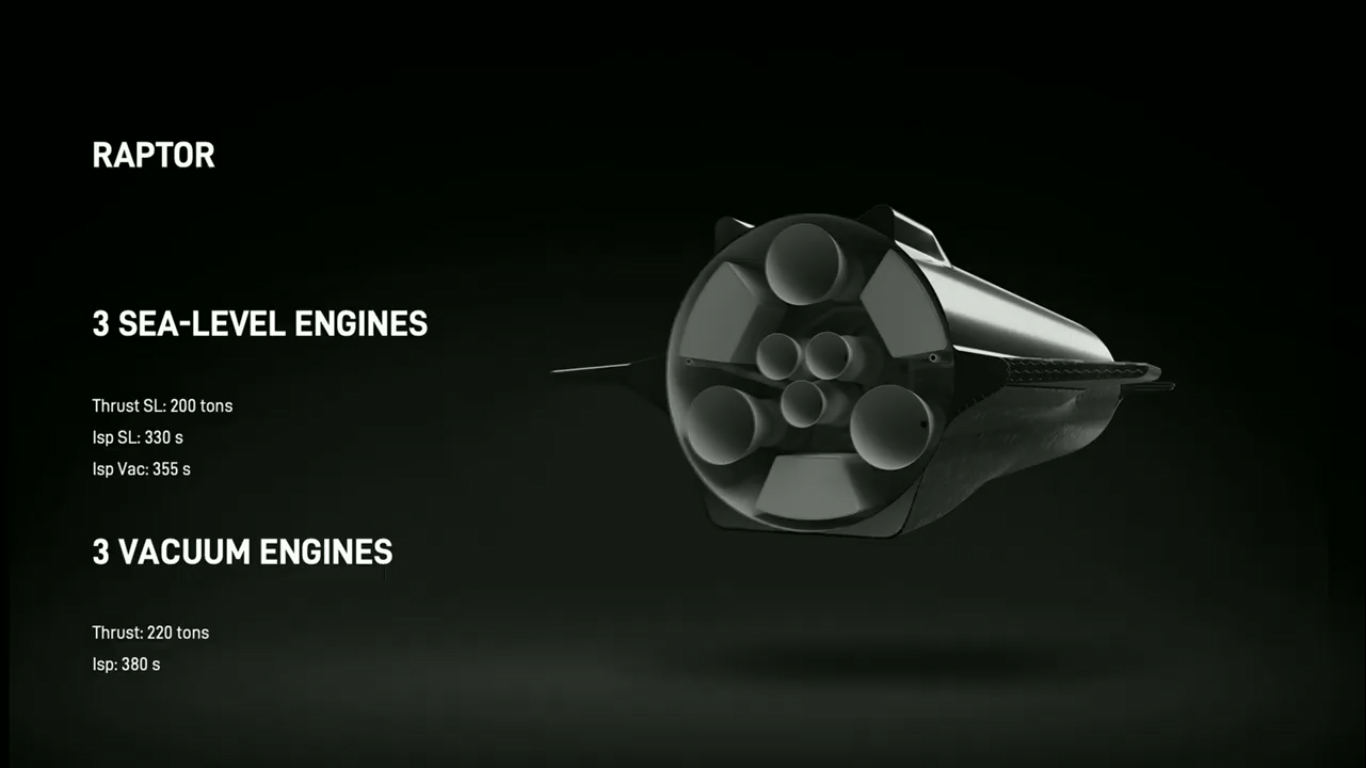
Starship's Engines
Of the six Raptor engines on Starship, three will be sea-level engines while the other three are reserved for use in the vacuum of space.
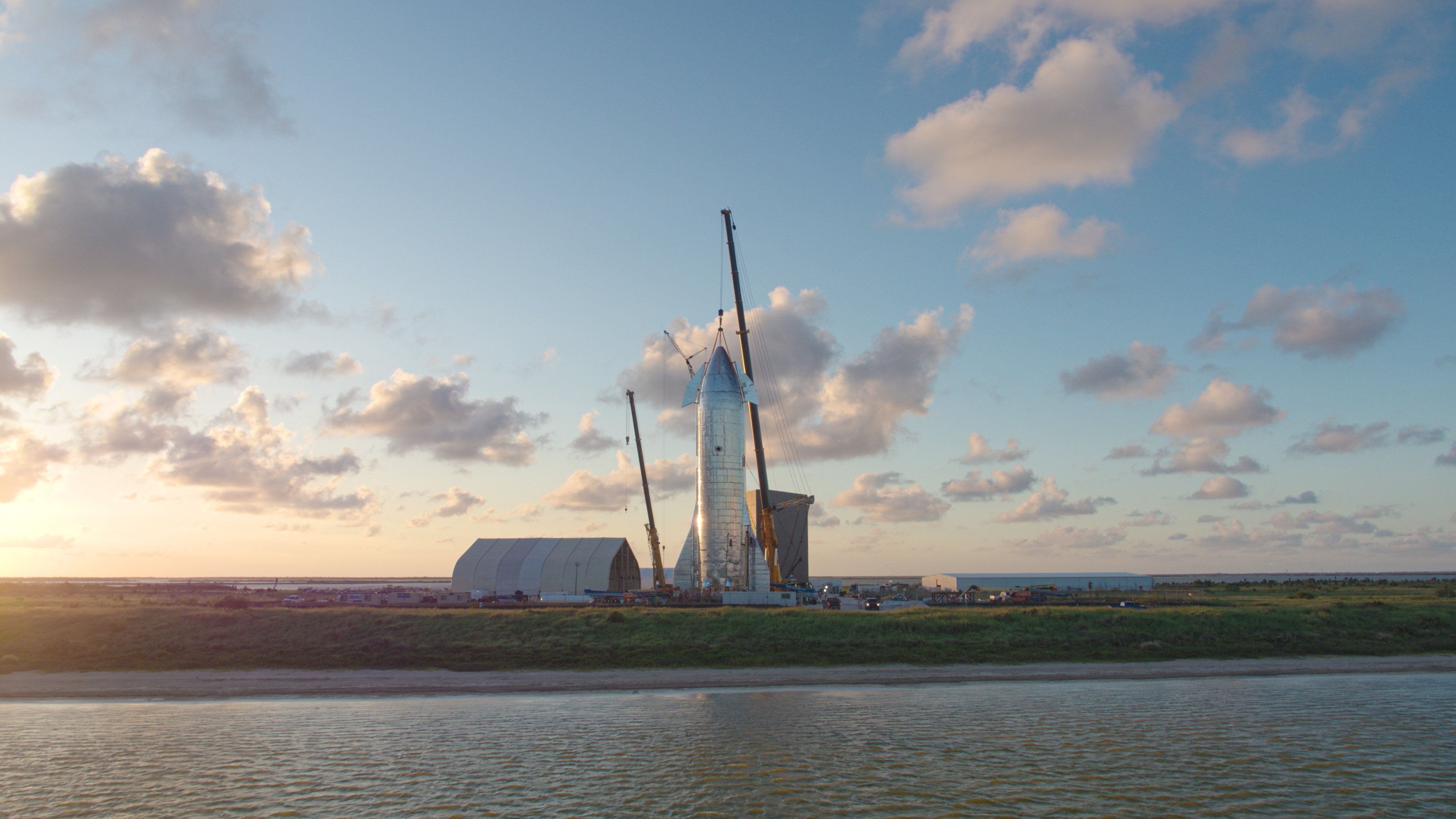
Starship in Texas
SpaceX's newly assembled Starship Mk1 prototype stands tall at the company’s launch facility in Cameron County, Texas.
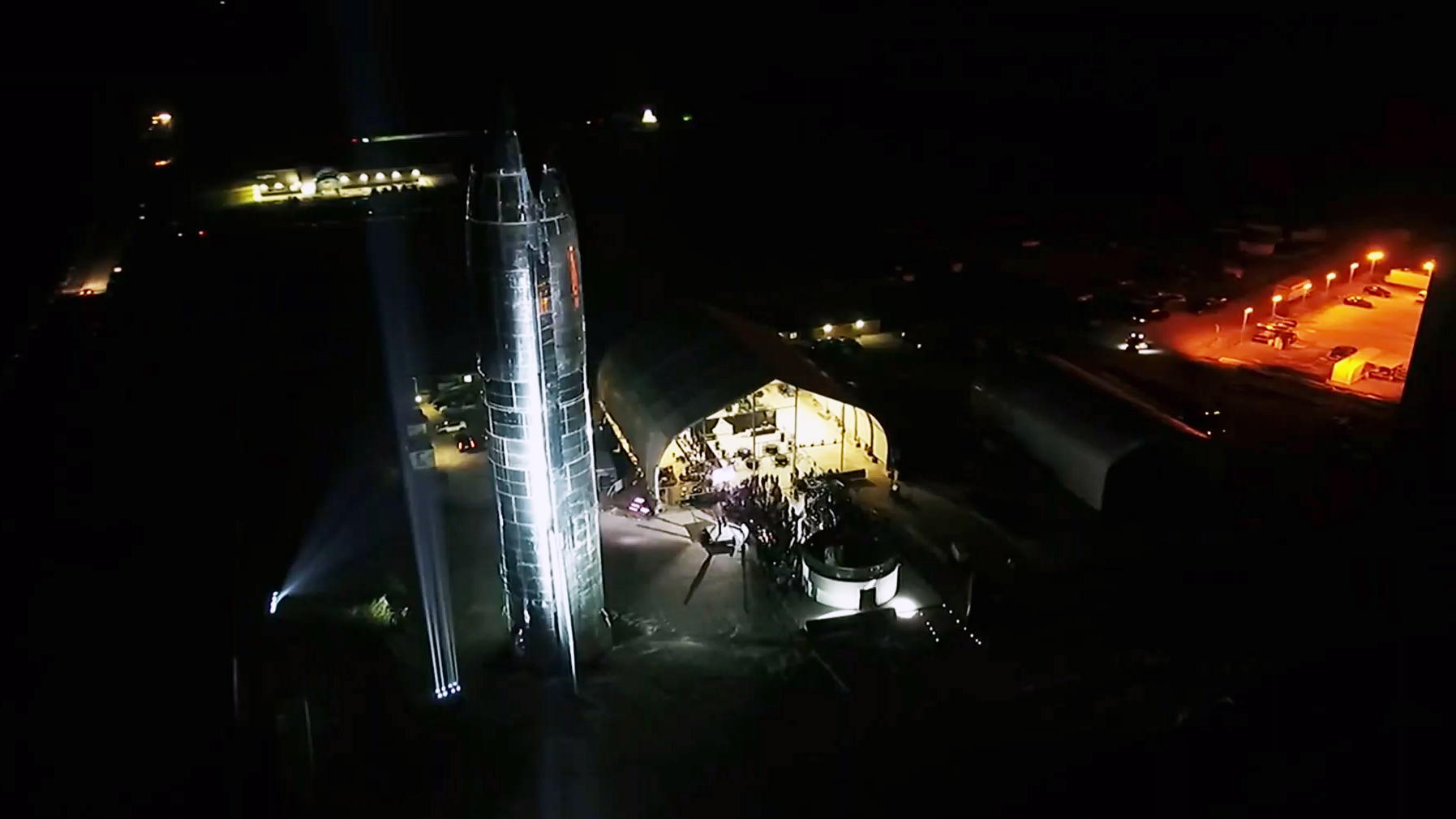
Starship Gathering
An aerial view of SpaceX's Starship Mk1 prototype, seen during Elon Musk's Starship update in South Texas on Sept. 28, 2019.
Full Story: Elon Musk Unveils SpaceX's New Starship Plans for Private Trips to the Moon, Mars and Beyond
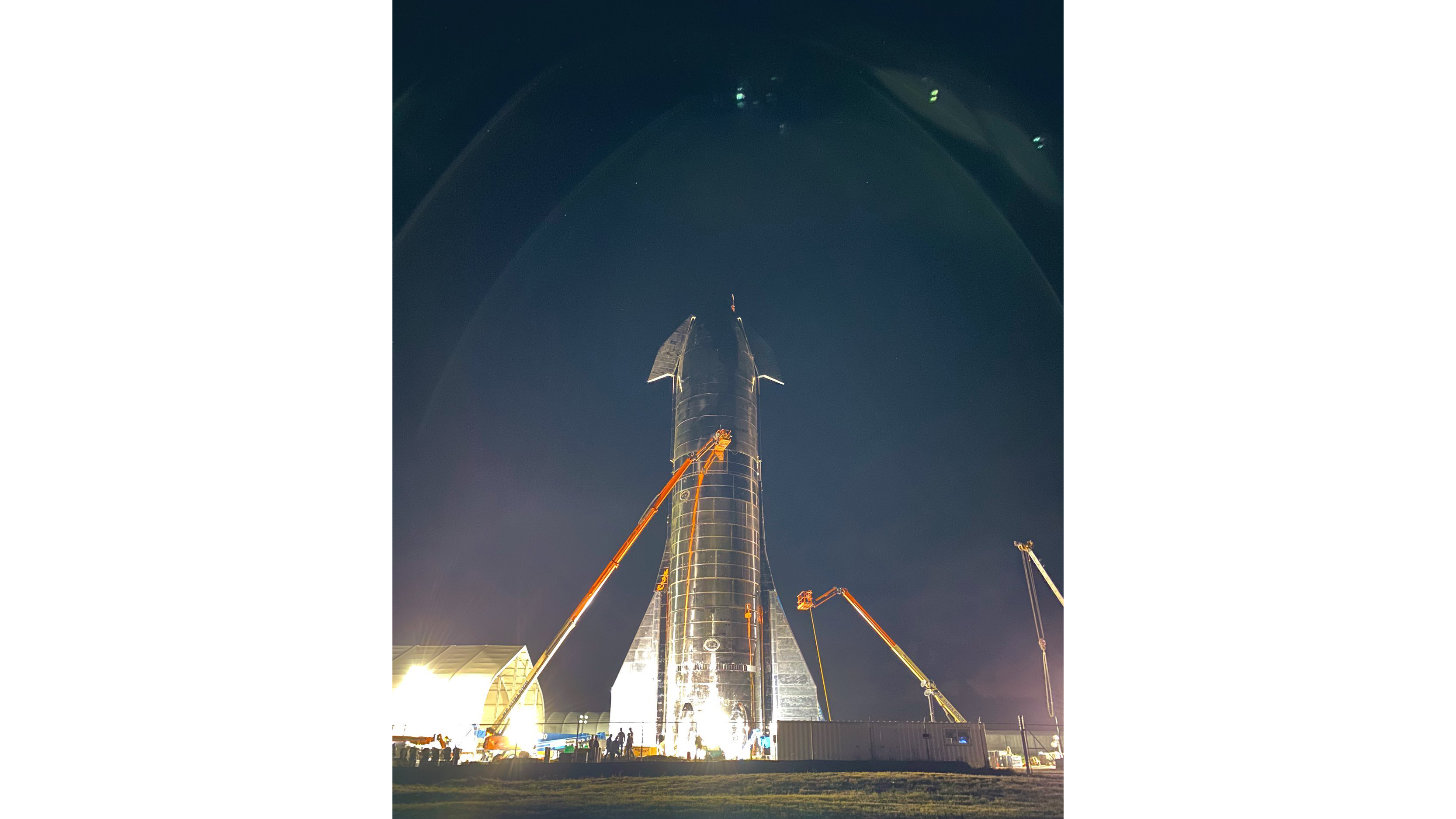
Starship Under the Stars
The bottom half of SpaceX's Starship Mk 1 prototype is seen at the company's South Texas facilities in this photo posted on Twitter by Elon Musk on Sept. 22, 2019.
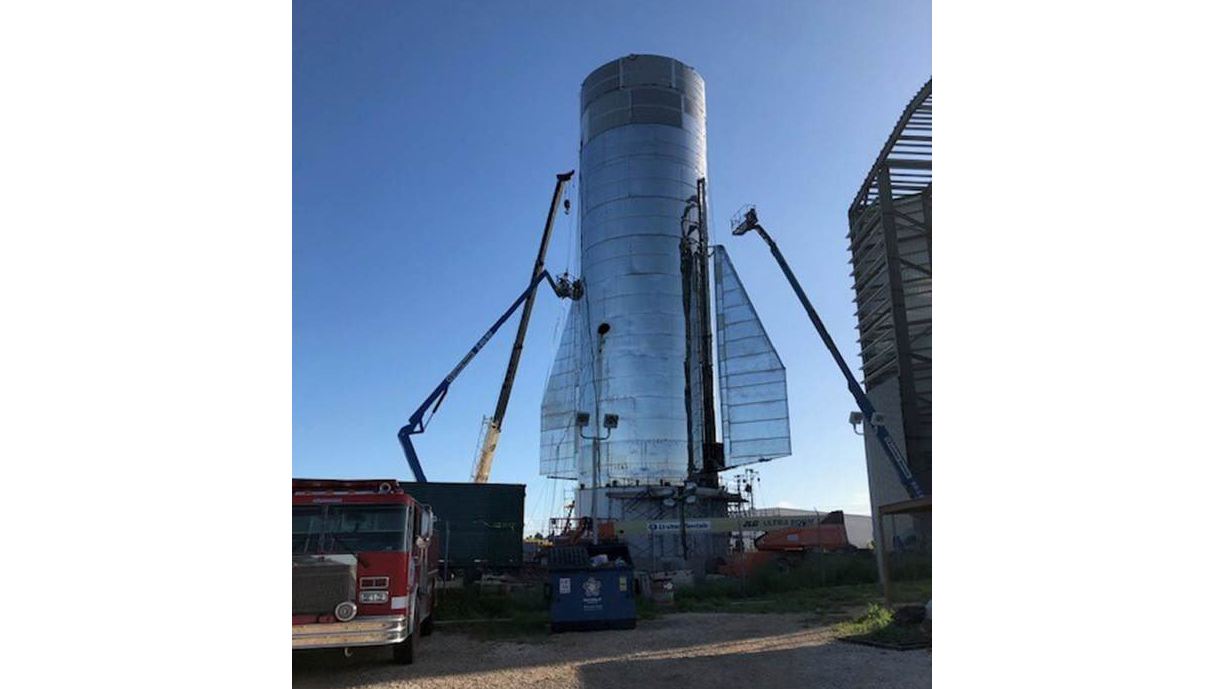
Installing the Fins
A photo tweeted by Elon Musk on Sept. 22, 2019 shows technicians installing stability-controlling rear fins on Starship Mk1.
Full Story: SpaceX's Next Starship Prototype Nearly Finished, Elon Musk Says (Photos)
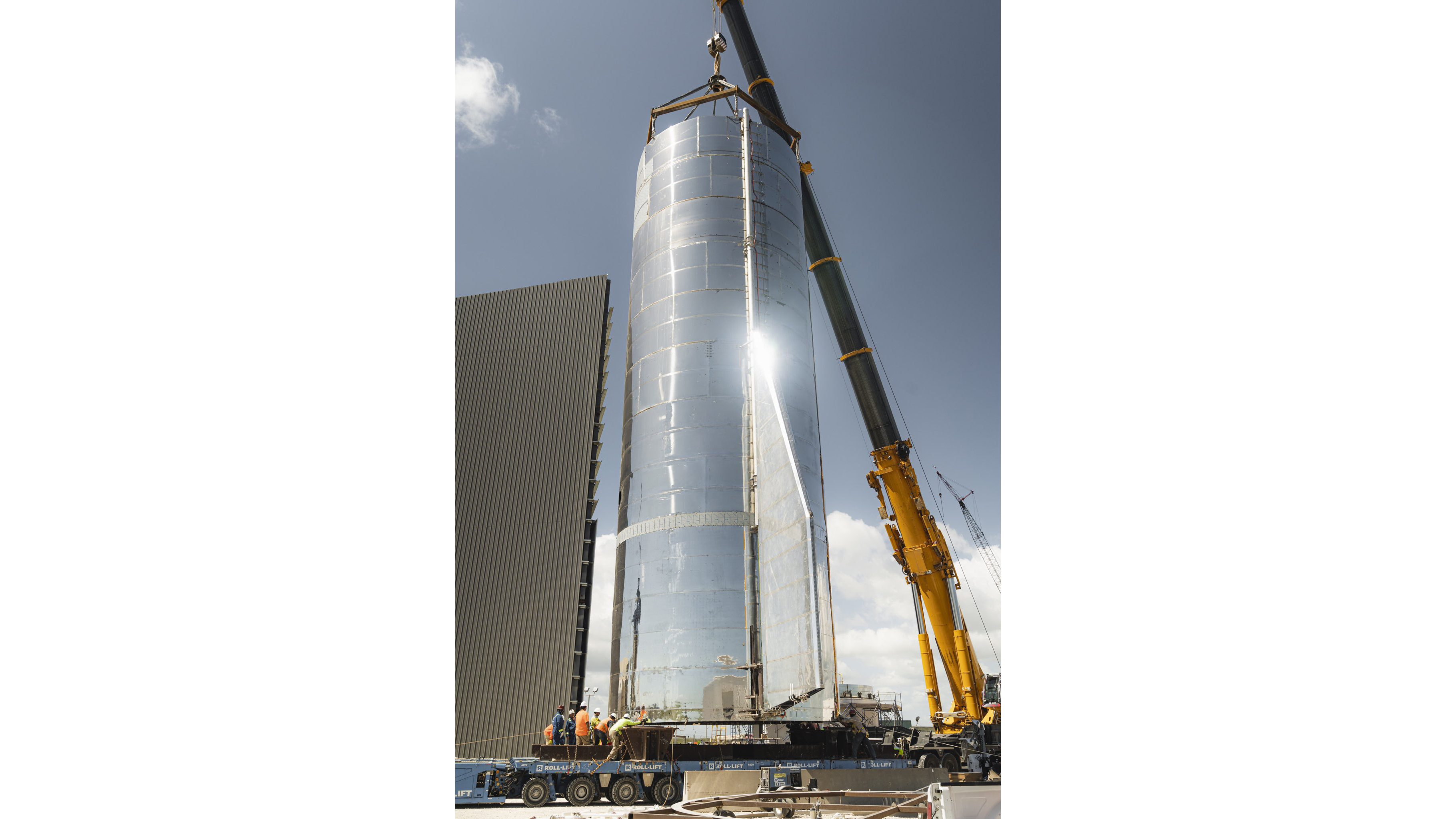
Starship's Bottom Half
SpaceX founder and CEO Elon Musk tweeted this photo of the bottom half of the Starship Mk1 prototype being lifted above a transporter on Sept. 25, 2019.
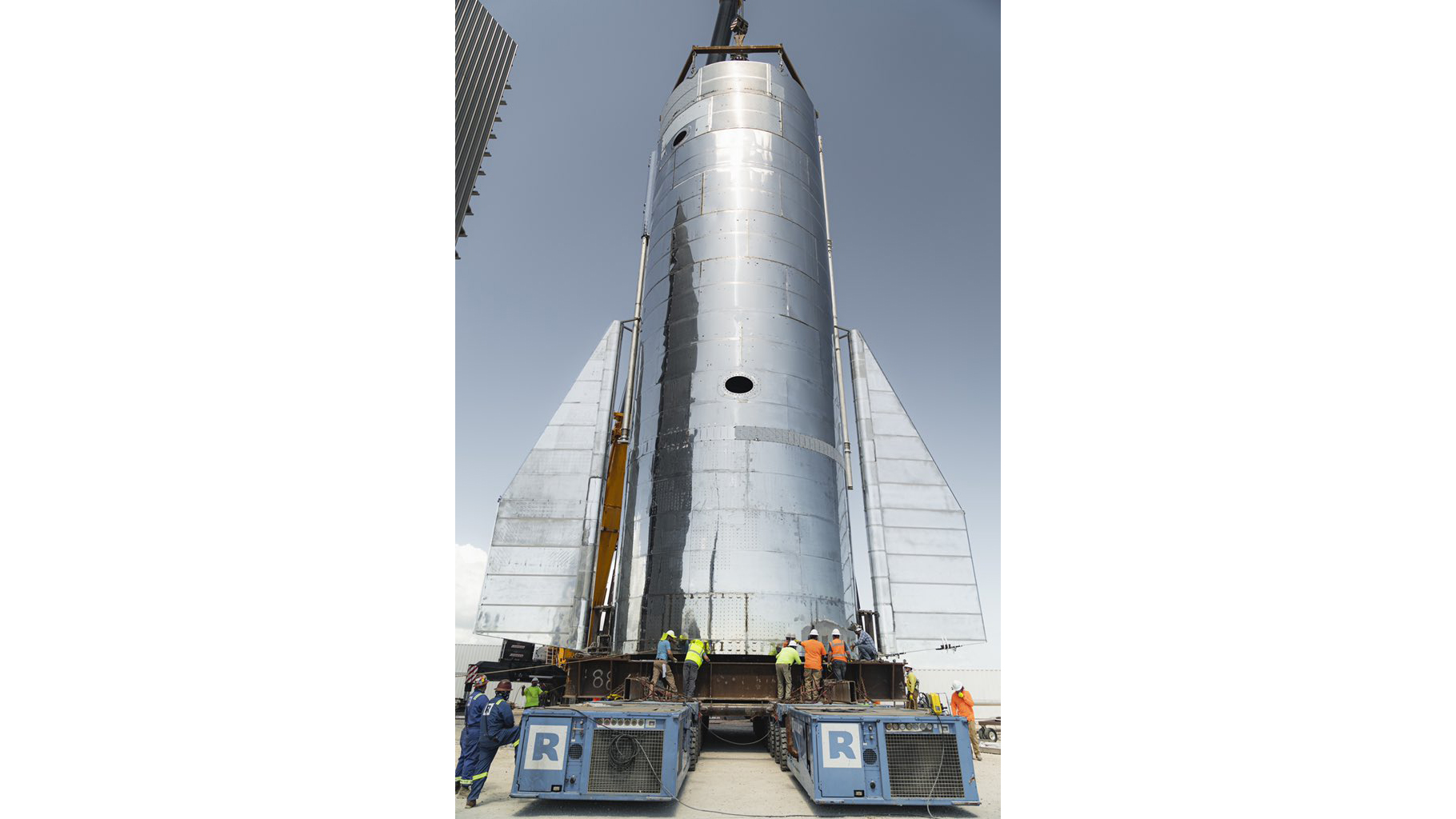
Starship on a Roll
SpaceX founder and CEO Elon Musk tweeted this photo of the Starship Mk1 prototype on a transporter on Sept. 25, 2019.
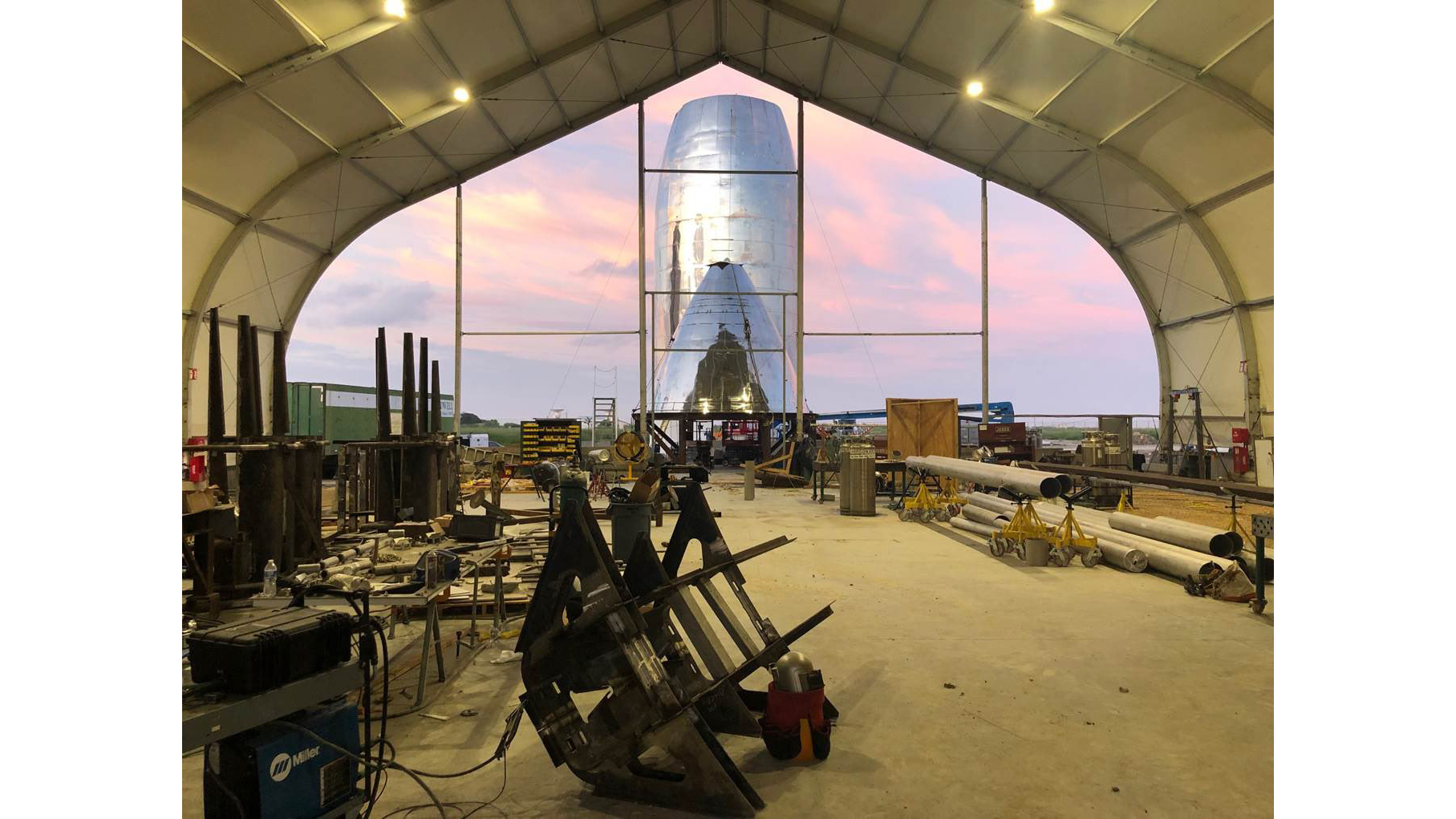
SpaceX's South Texas Facility
Elon Musk tweeted this photo of the company's Starship Mk1 prototype at its South Texas facility on Sept. 17, 2019.
Full Story: SpaceX's Next Starship Prototype Taking Shape (Photos)
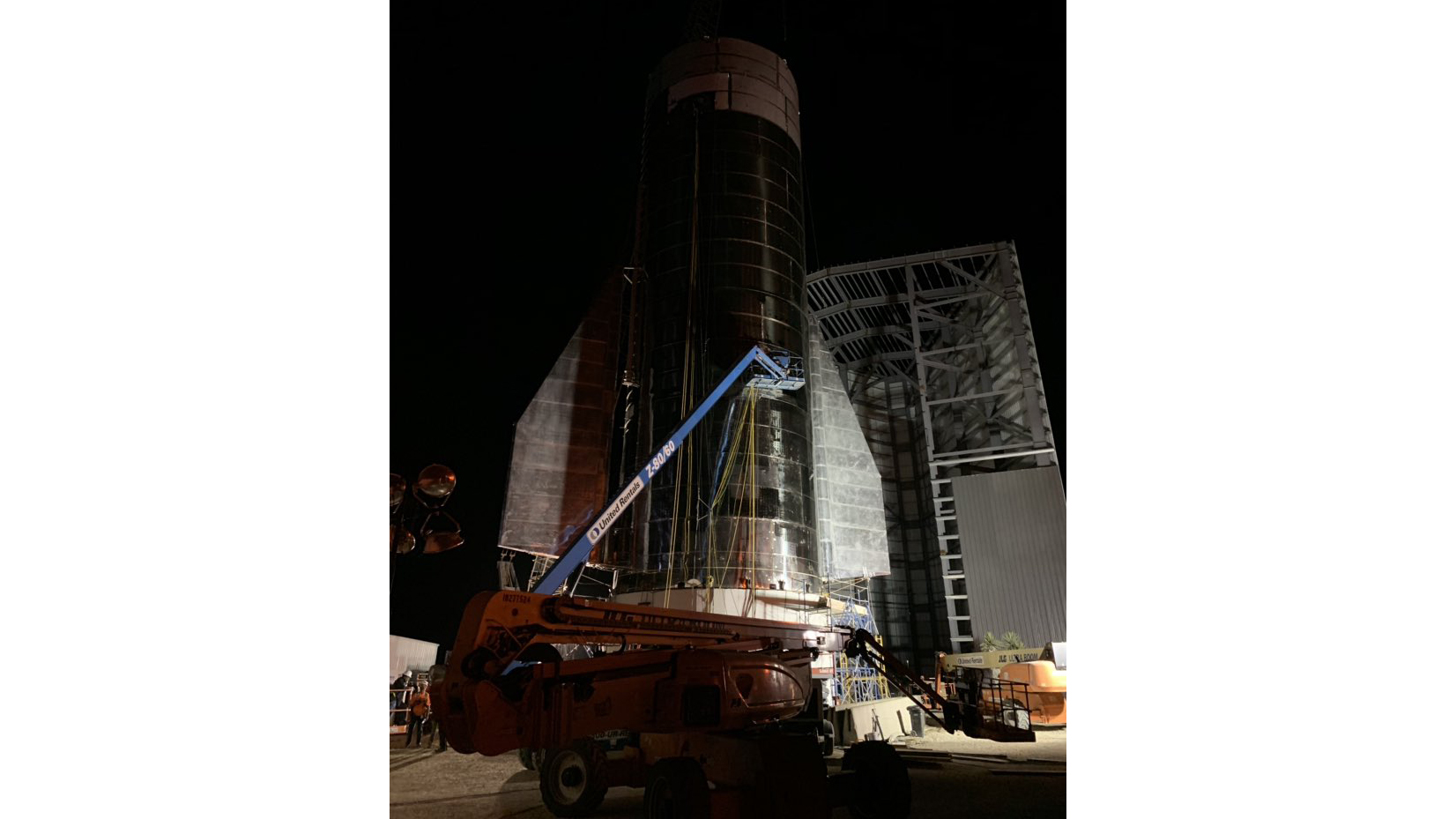
Starship Under Construction
The bottom half of SpaceX's Starship Mk 1 prototype is seen at the company's South Texas facilities in this photo posted on Twitter by Elon Musk on Sept. 22, 2019.
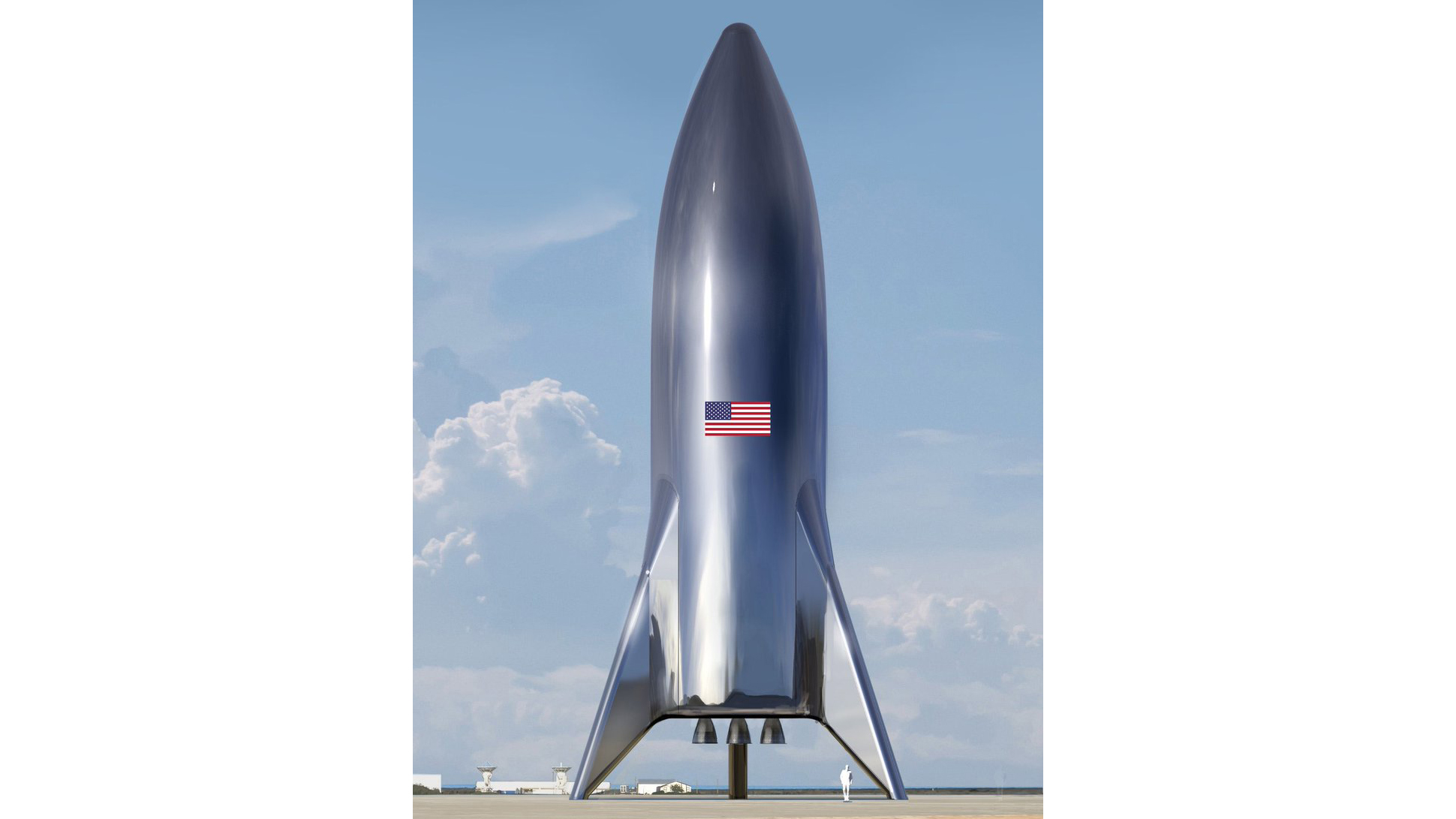
Starship "Hopper" Prototype: Artist's Rendering
An artist's illustration of the "hopper" test-flight version of SpaceX's Starship vehicle, shared via Twitter by company founder and CEO Elon Musk on Jan. 5, 2019.
Related: Meet SpaceX's Starship Hopper
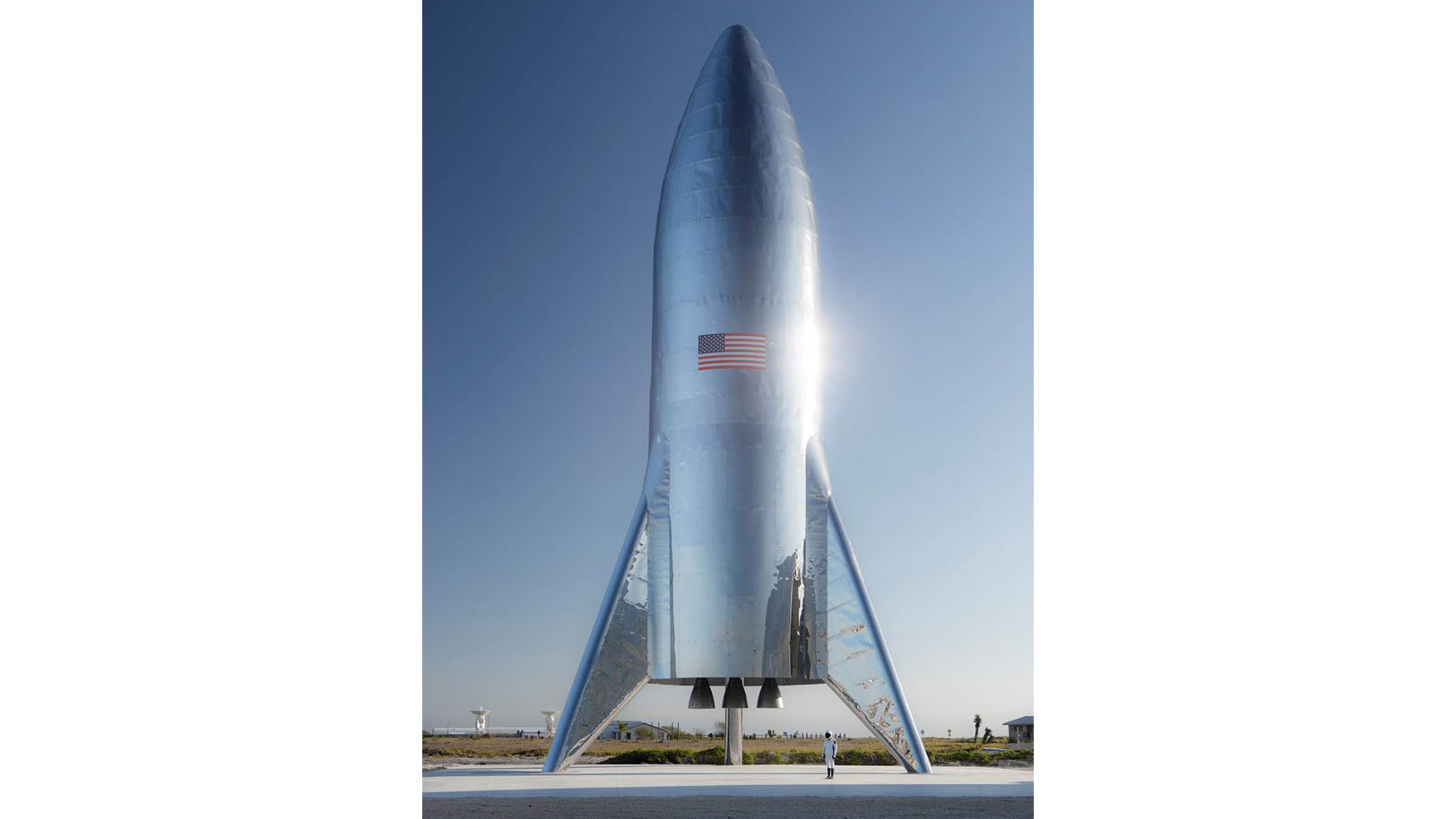
Starship "Hopper" Prototype: The Real Thing
The test-flight version of SpaceX's Starship "Hopper" vehicle stands completed at the company's Texas test site. Elon Musk posted this photo on Twitter on Jan. 10, 2019.
Full Story: SpaceX Finishes Building 'Starship' Hopper Prototype (Photo)
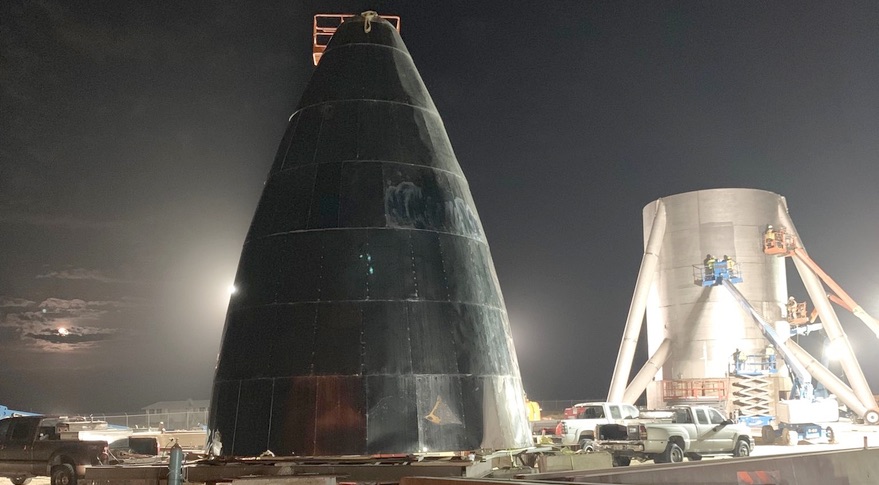
Hopper Under Construction
Portions of SpaceX's first "hopper" test article for its Starship vehicle being assembled at the company's South Texas launch site, seen here in a photo tweeted by SpaceX CEO Elon Musk Dec. 24, 2018.
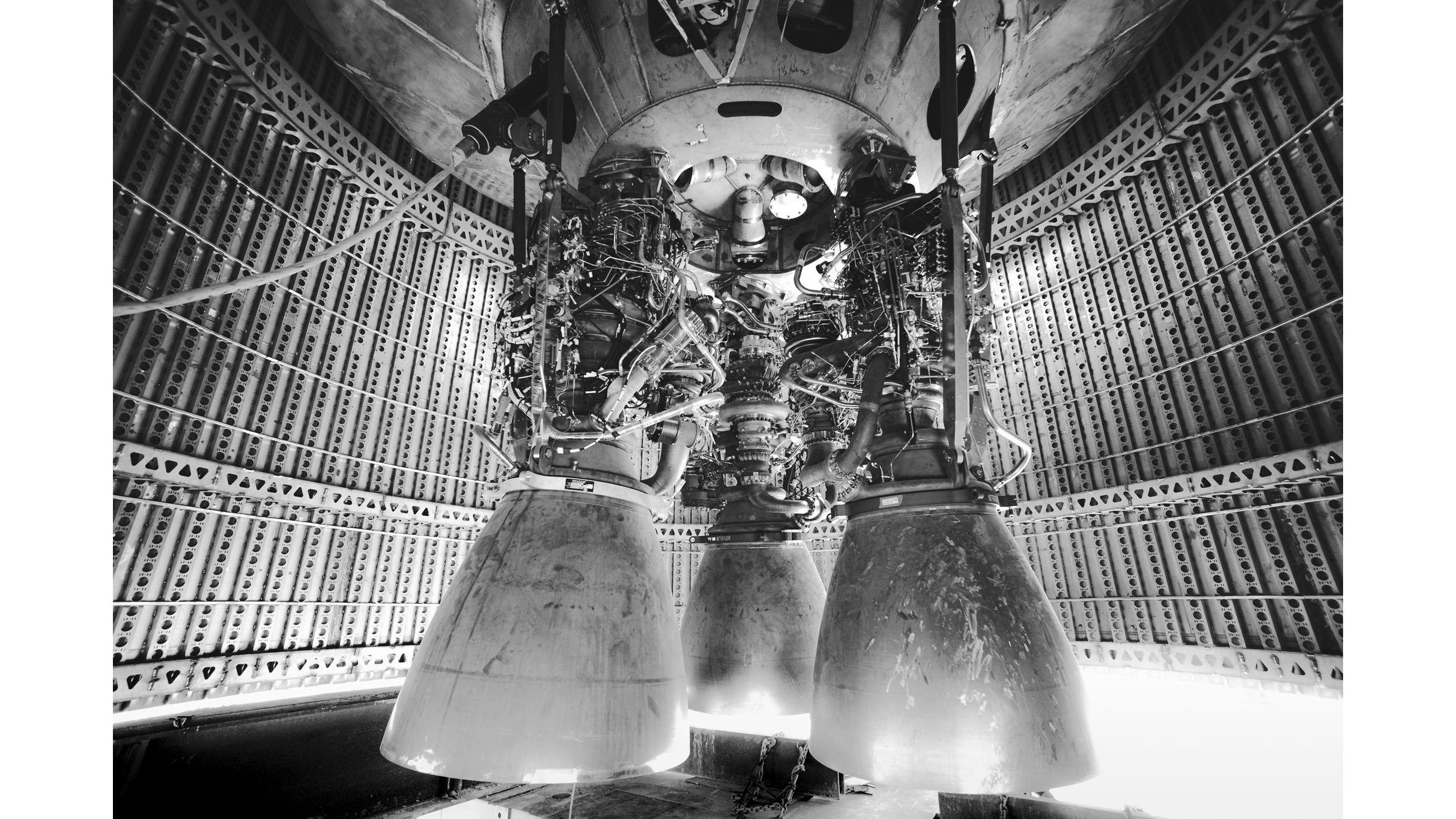
The Raptor Engines
SpaceX’s founder and chief executive Elon Musk shared black-and-white images on Sept. 26, 2019, showing off the three Raptor engines on the Starship prototype.
Related: Elon Musk Just Dropped More Tantalizing Details About SpaceX's Starship Prototype
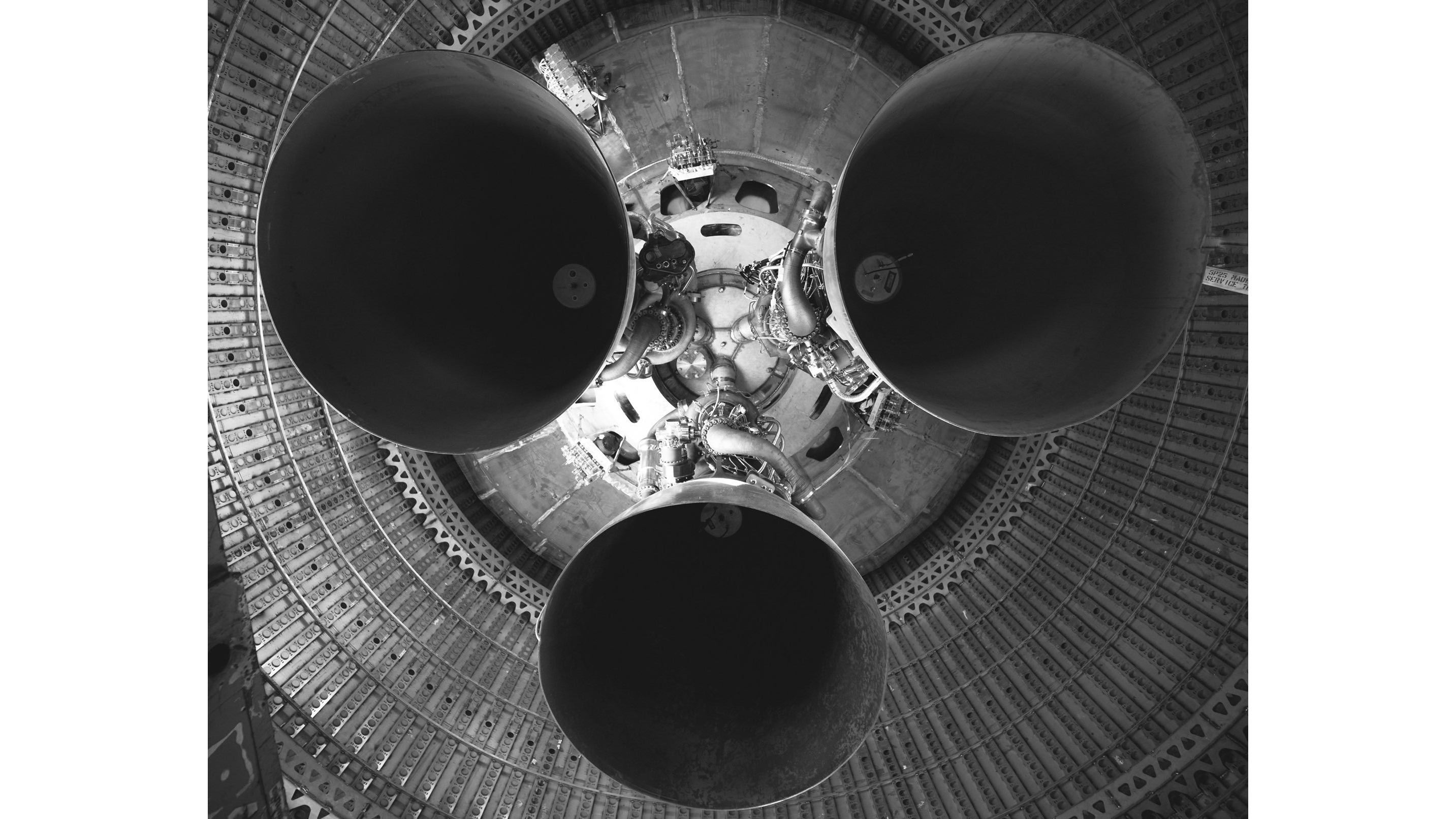
The Raptor Engines
SpaceX’s founder and chief executive Elon Musk shared black-and-white images on Sept. 26, 2019, showing off the three Raptor engines on the Starship prototype.
Related: Elon Musk Just Dropped More Tantalizing Details About SpaceX's Starship Prototype
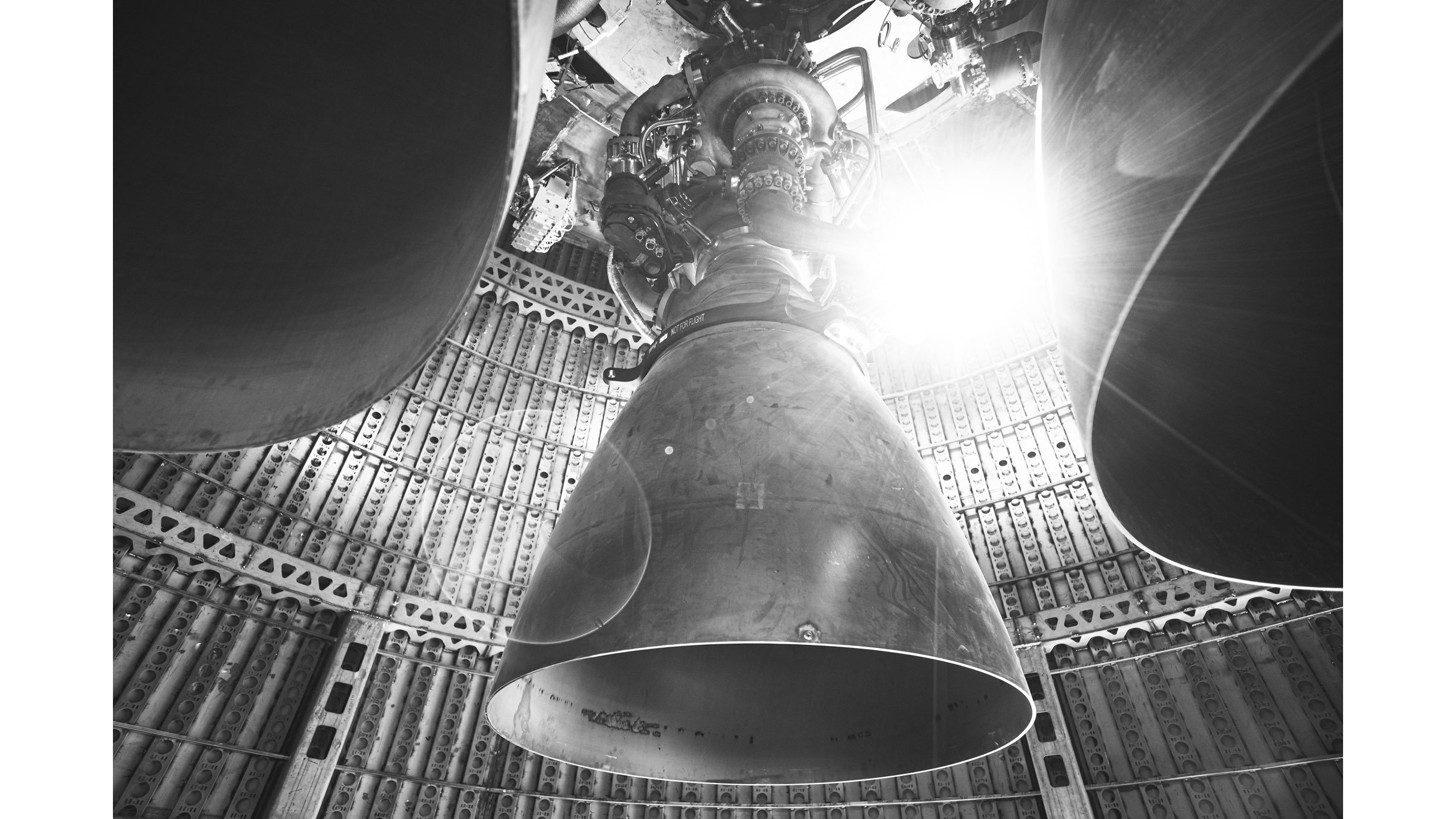
The Raptor Engines
SpaceX’s founder and chief executive Elon Musk shared black-and-white images on Sept. 26, 2019, showing off the three Raptor engines on the Starship prototype.
Related: Elon Musk Just Dropped More Tantalizing Details About SpaceX's Starship Prototype
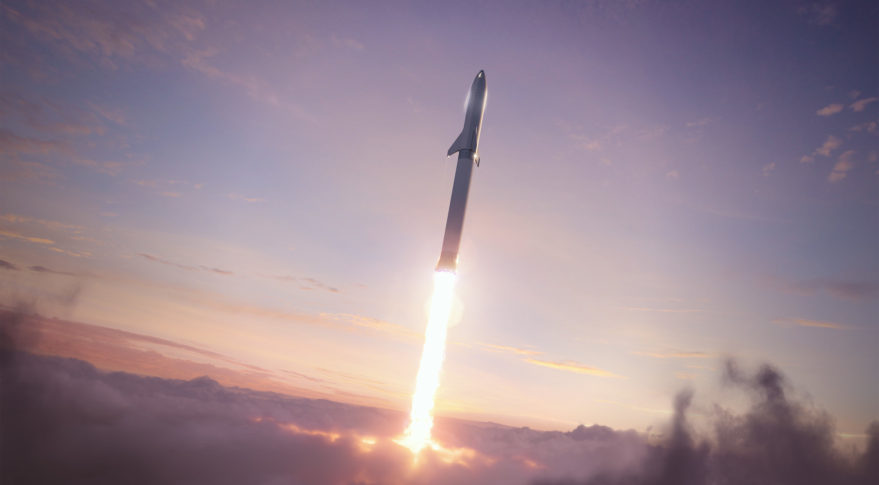
Starship and Super Heavy Ascent
Before it was Starship, it was called the BFR, or "Big Falcon Rocket." SpaceX's 2018 BFR design showcased a sleek, sci-fi looking spaceship and its 1st stage booster as shown in this image unveiled by Elon Musk on Sept. 17, 2018.
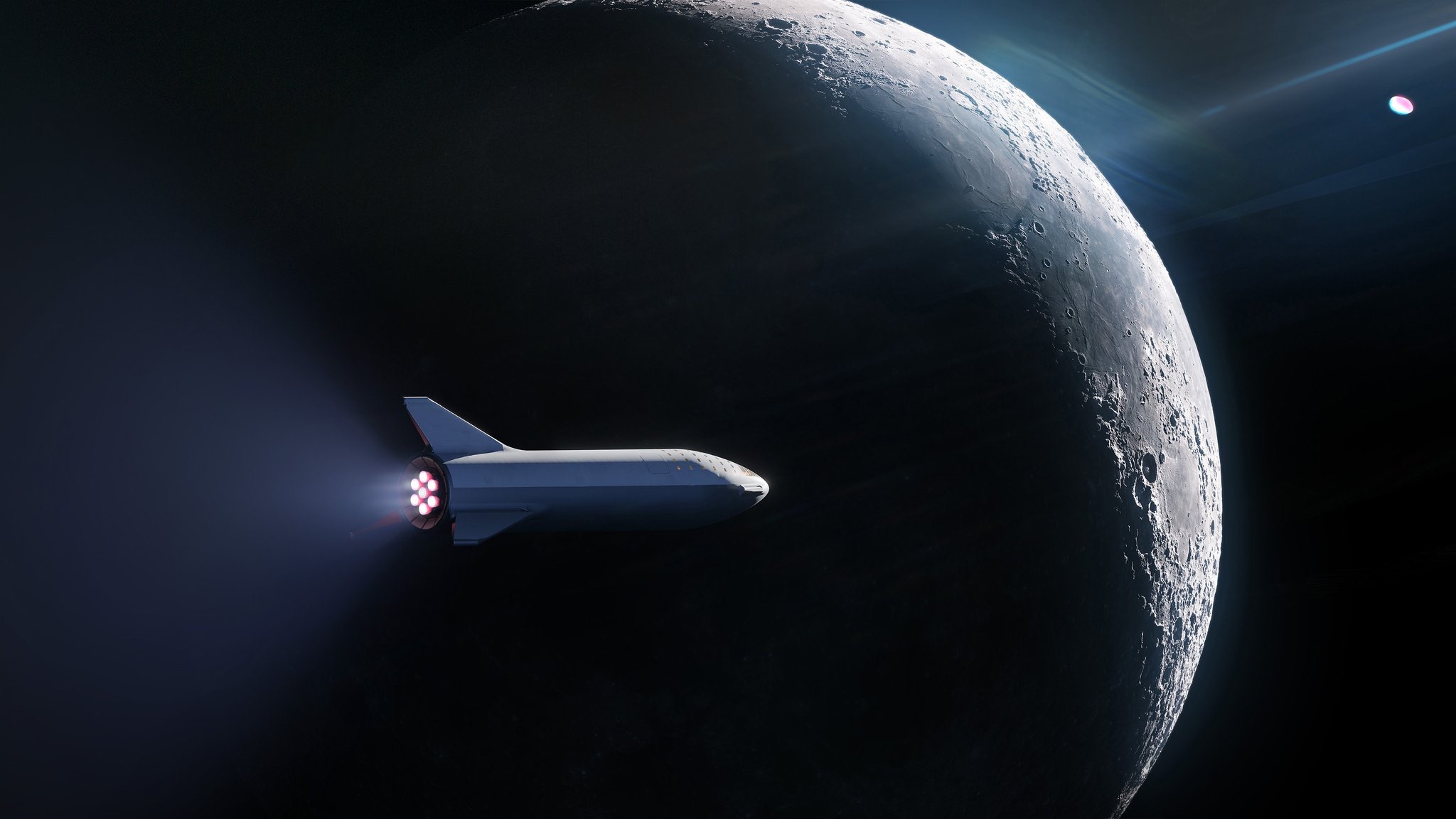
At the Moon
On Sept. 13, 2018, SpaceX announced it had signed the 1st private passenger for a moon trip on BFR. This image released with that announcement offered the first glimpse of BFR's design changes since the 2017 ITS version (which fill much of this gallery).
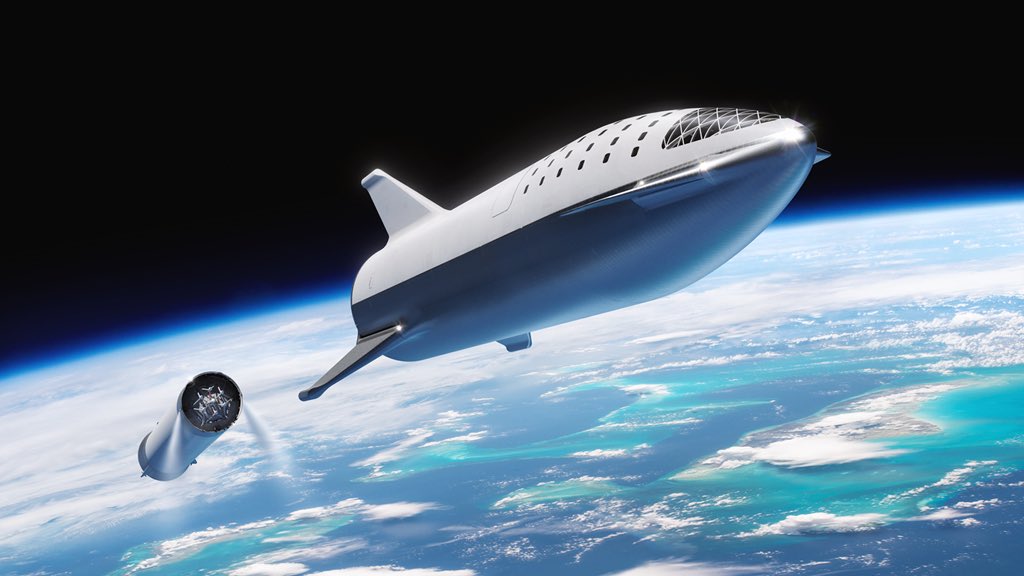
Stage Separation
An artist's illustration of SpaceX's Big Falcon Rocket launching into space. SpaceX will launch Japanese entrepreneur Yusaku Maezawa on the first private passenger flight around the moon, possibly in 2023.
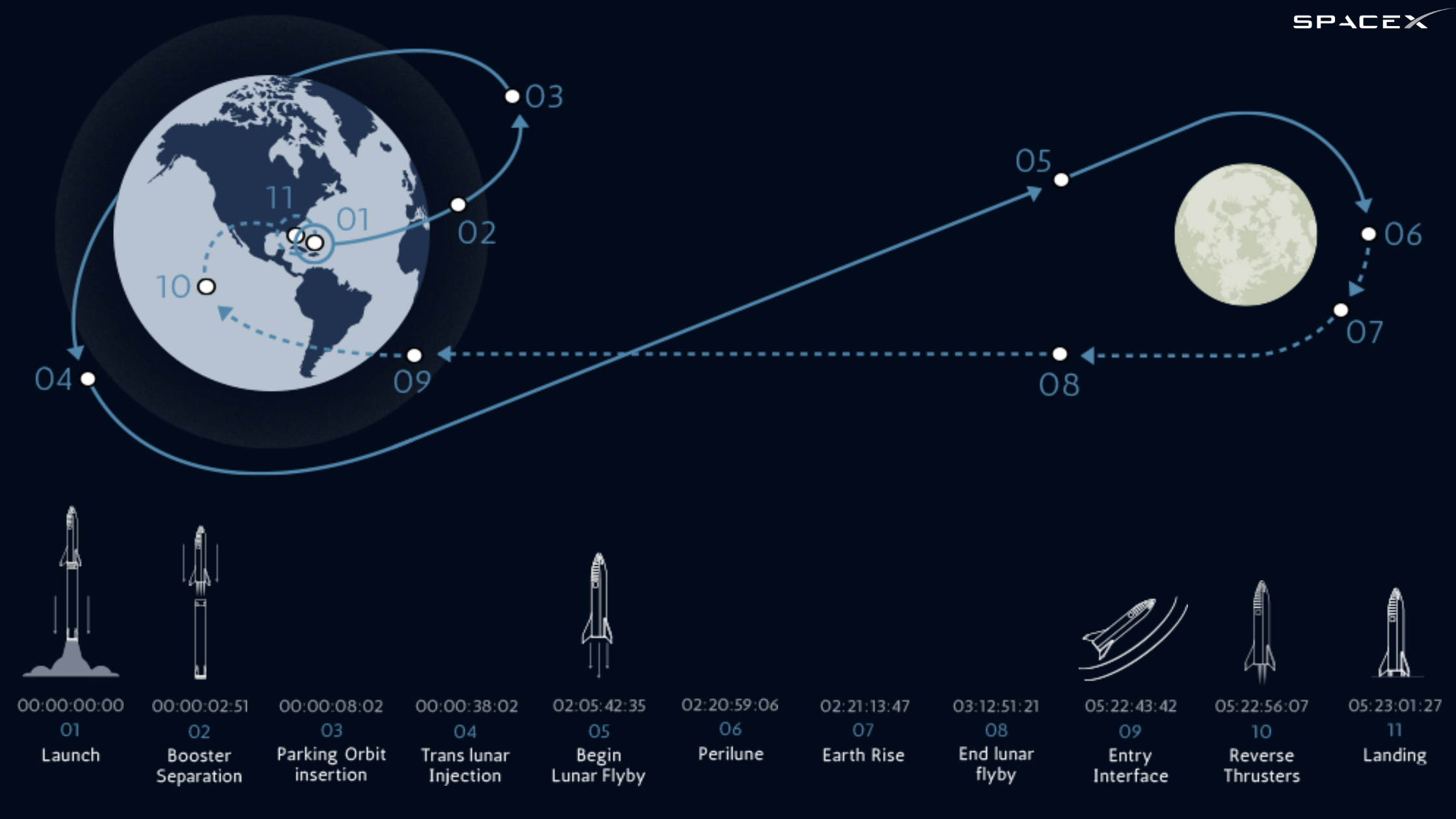
#dearMoon Flight Plan
The flight plan for the #dearMoon mission, which will use a SpaceX Starship and Super Heavy rocket to launch a group of artists on a mission to fly around the moon.
Related: How SpaceX's 1st Passenger Flight Around the Moon with Yusaku Maezawa Will Work
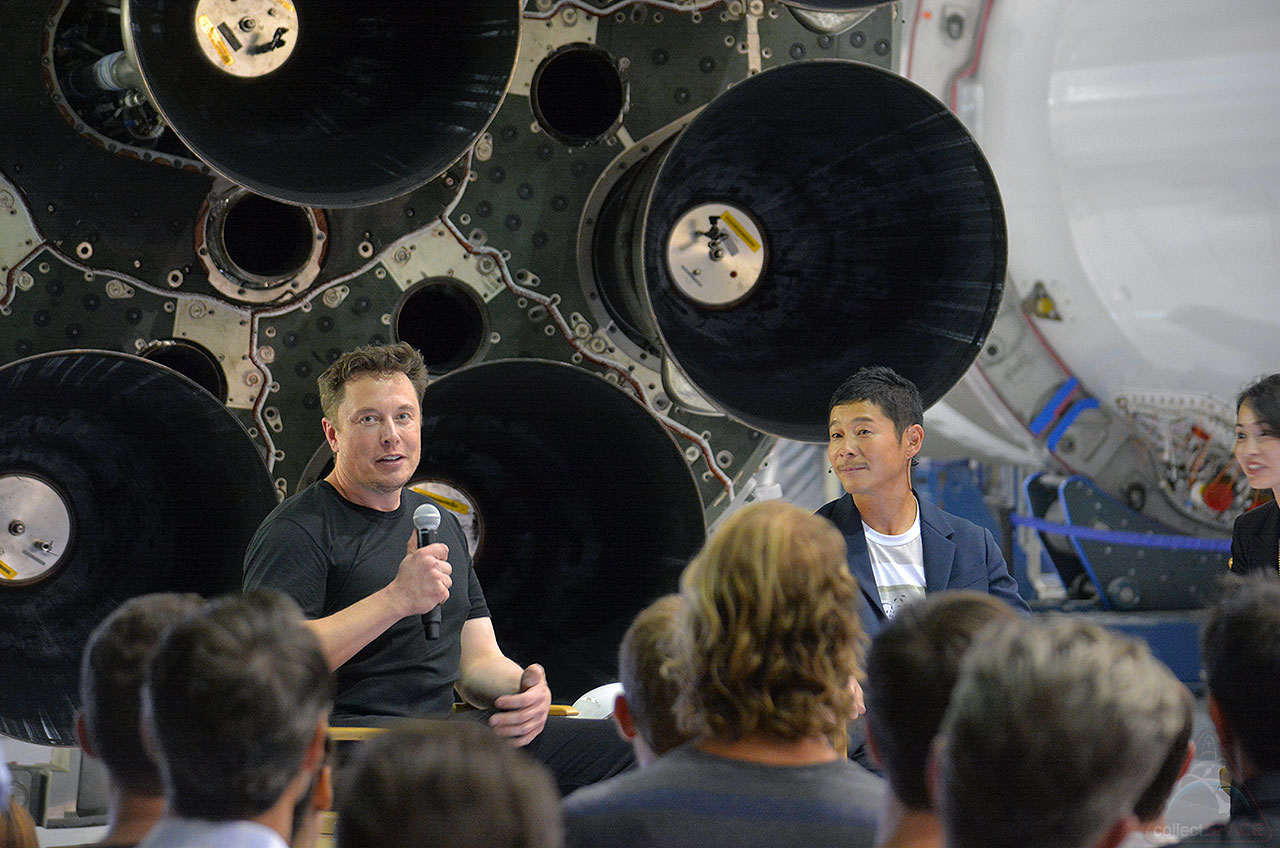
Elon Musk and Yusaku Maezawa
SpaceX CEO Elon Musk and Japanese entrepreneur Yusaku Maezawa, who has booked SpaceX's first private flight around the moon, meet the press during the mission's unveiling at the company's headquarters in Hawthorne, California on Sept. 17, 2018.
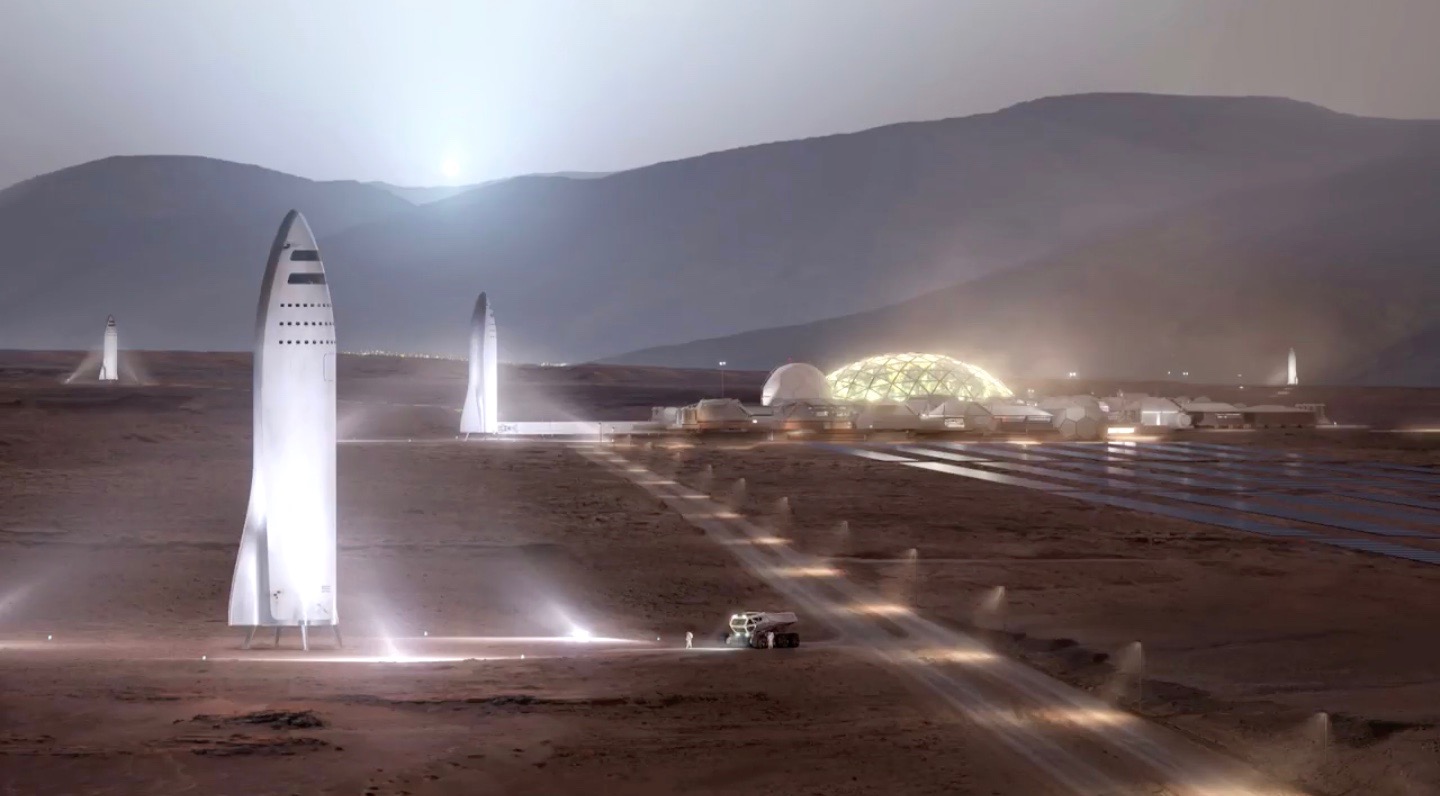
Starship on Mars
An artist's illustration of SpaceX "BFR" spaceships on the surface of Mars.
Related: How SpaceX's Starship Will Help Establish a Mars Base
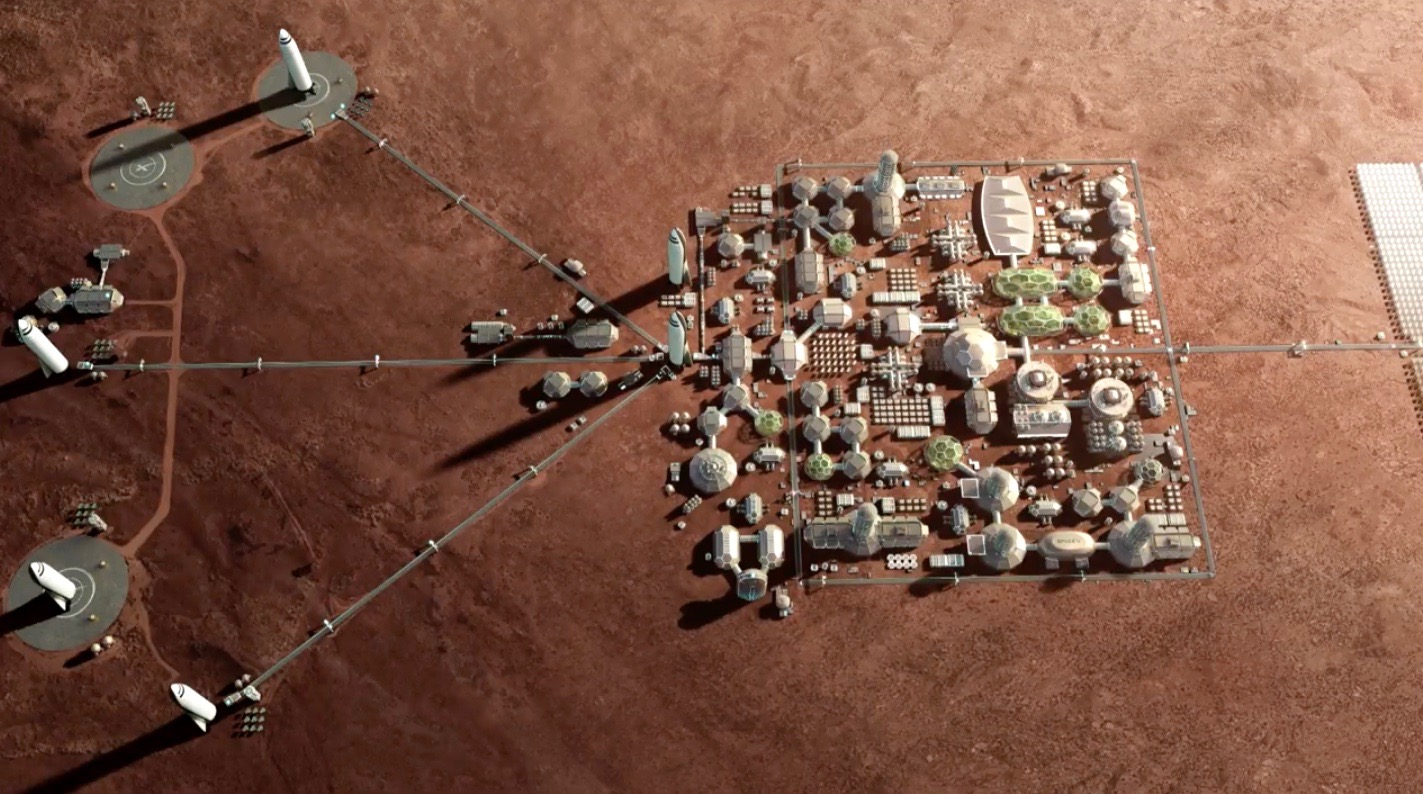
SpaceX's Vision for a Mars City
SpaceX aims to launch its first Mars cargo missions in 2022 and the first crews in 2024. If all goes according to plan, these first flights will plant the seeds of a permanent, sustainable city on the Red Planet.
Related: How Elon Musk Plans to Build a Million-Person Martian City
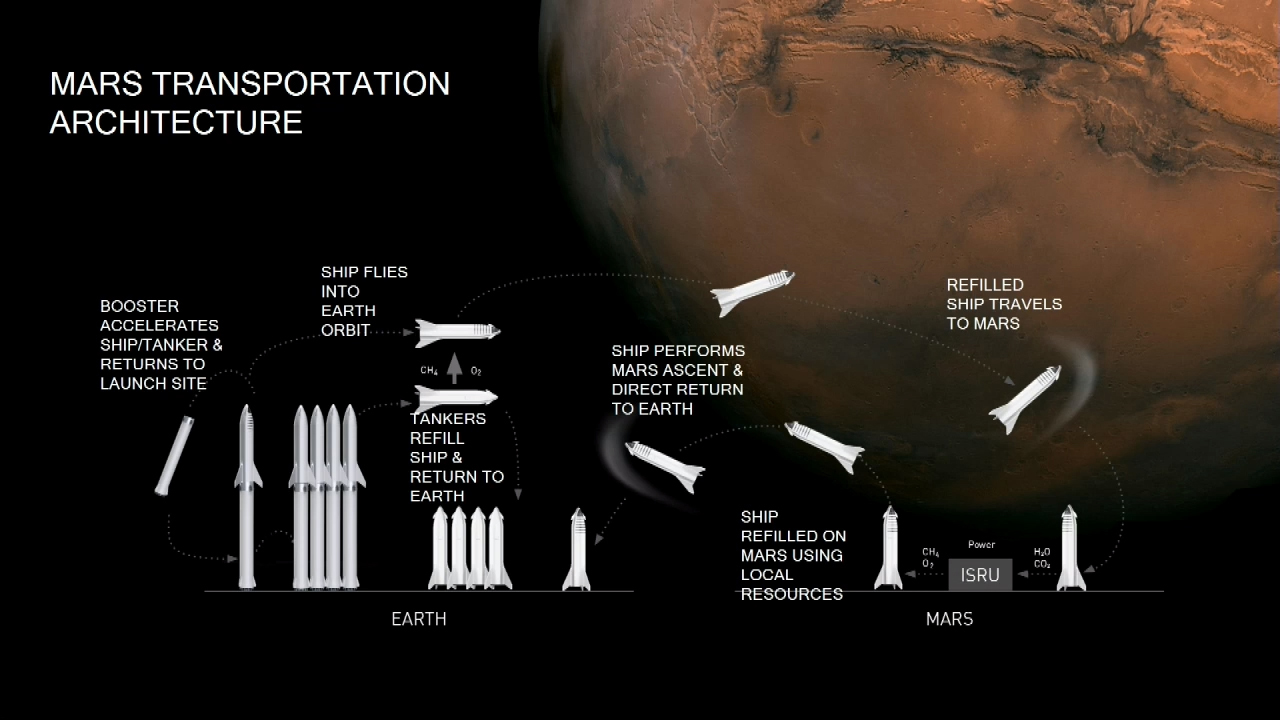
Starship for Mars
This SpaceX infographic shows how the company aims to use its Starship interstellar spacecraft to transport humans and cargo to and from the Red Planet.
Full Story: How SpaceX's Starship Will Help Establish a Mars Base
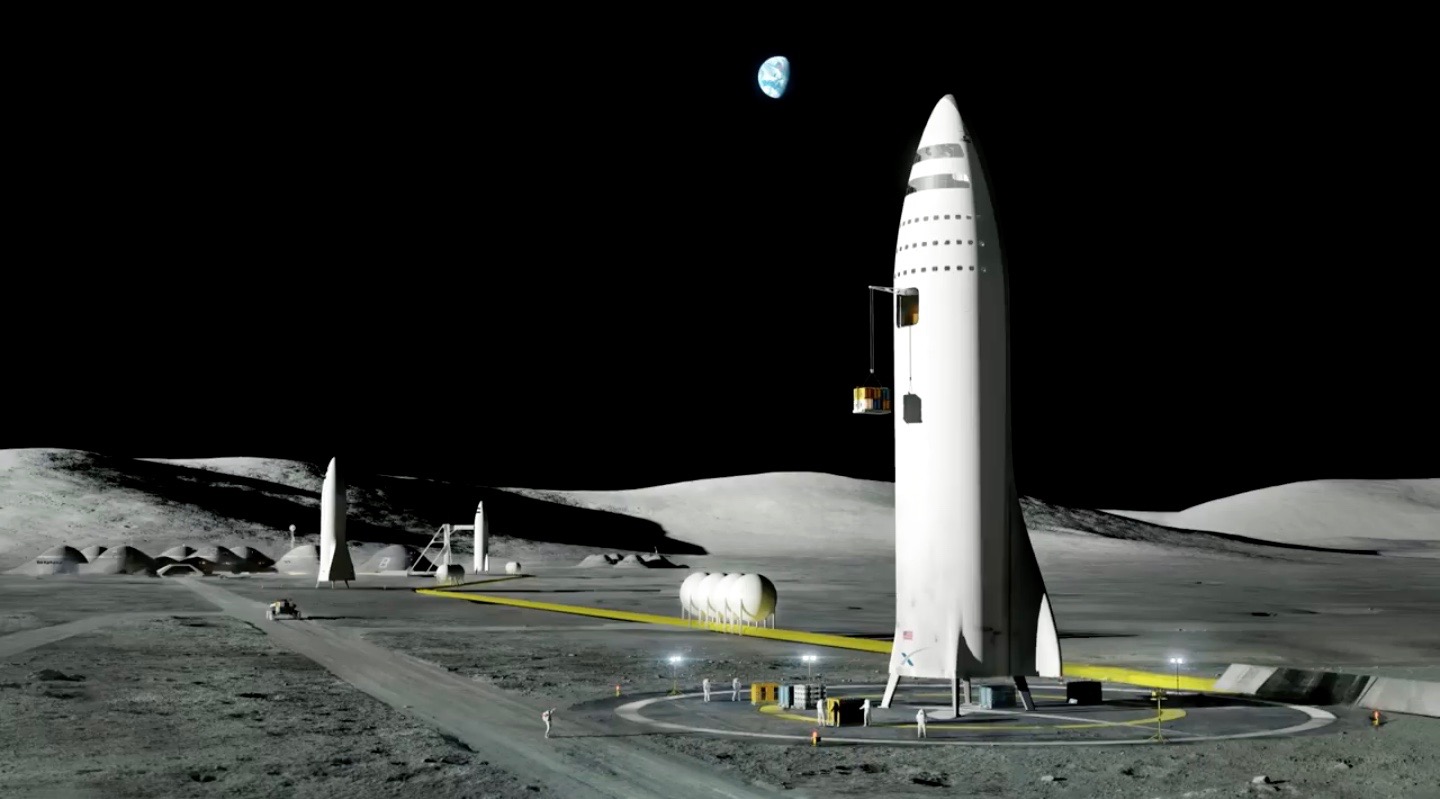
SpaceX on the Moon
The Starship architecture isn’t Mars-specific; the system could help establish a base on the moon, Musk said.
Related: Elon Musk Calls for Moon Base
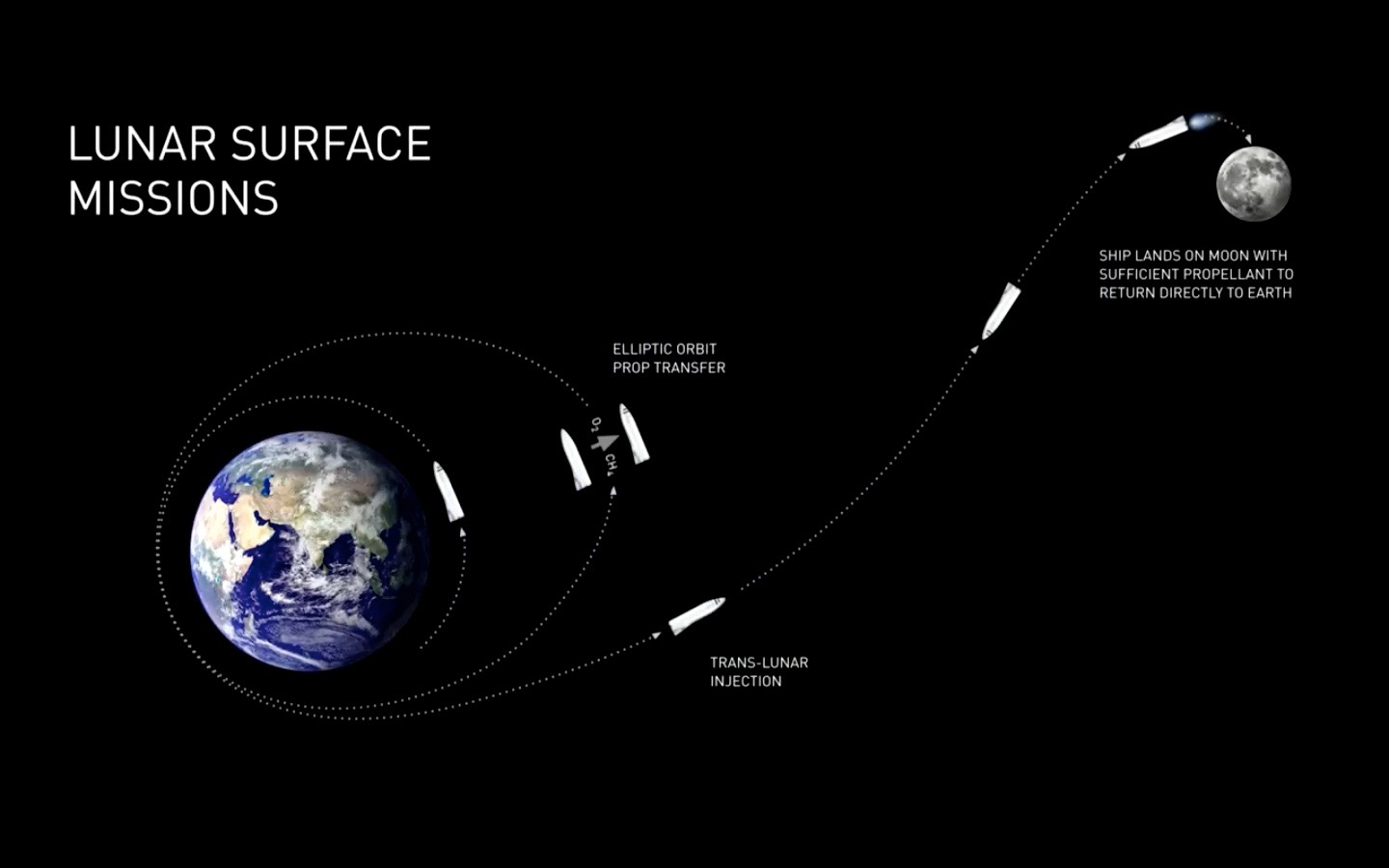
From Earth to the Moon
Starship could make it from Earth orbit to the lunar surface and back again without needing to refuel, Musk said.
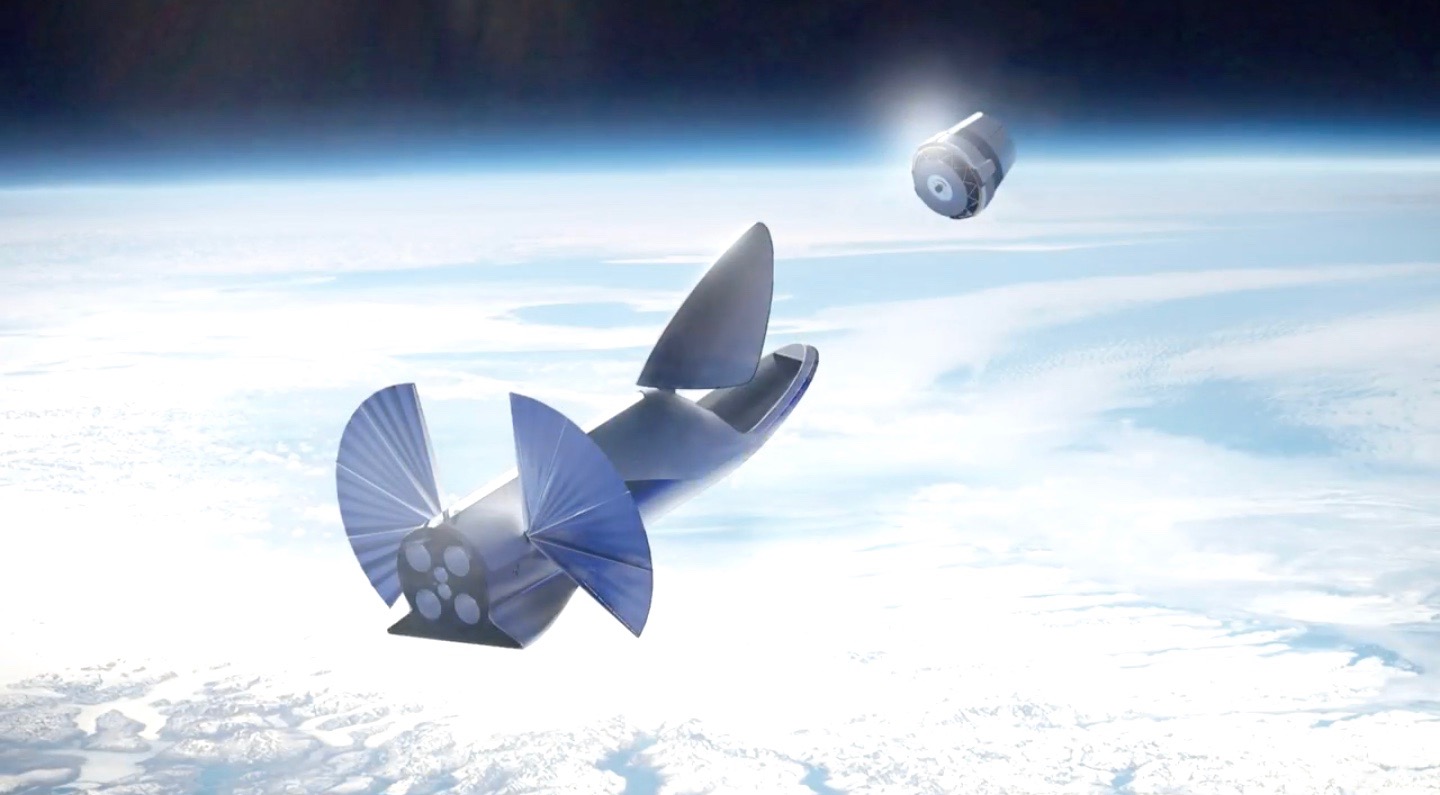
Deploying a Satellite
The Starship system will also be able to launch very large satellites, according to Elon Musk. The company is targeting 2021 for its first commercial launch.
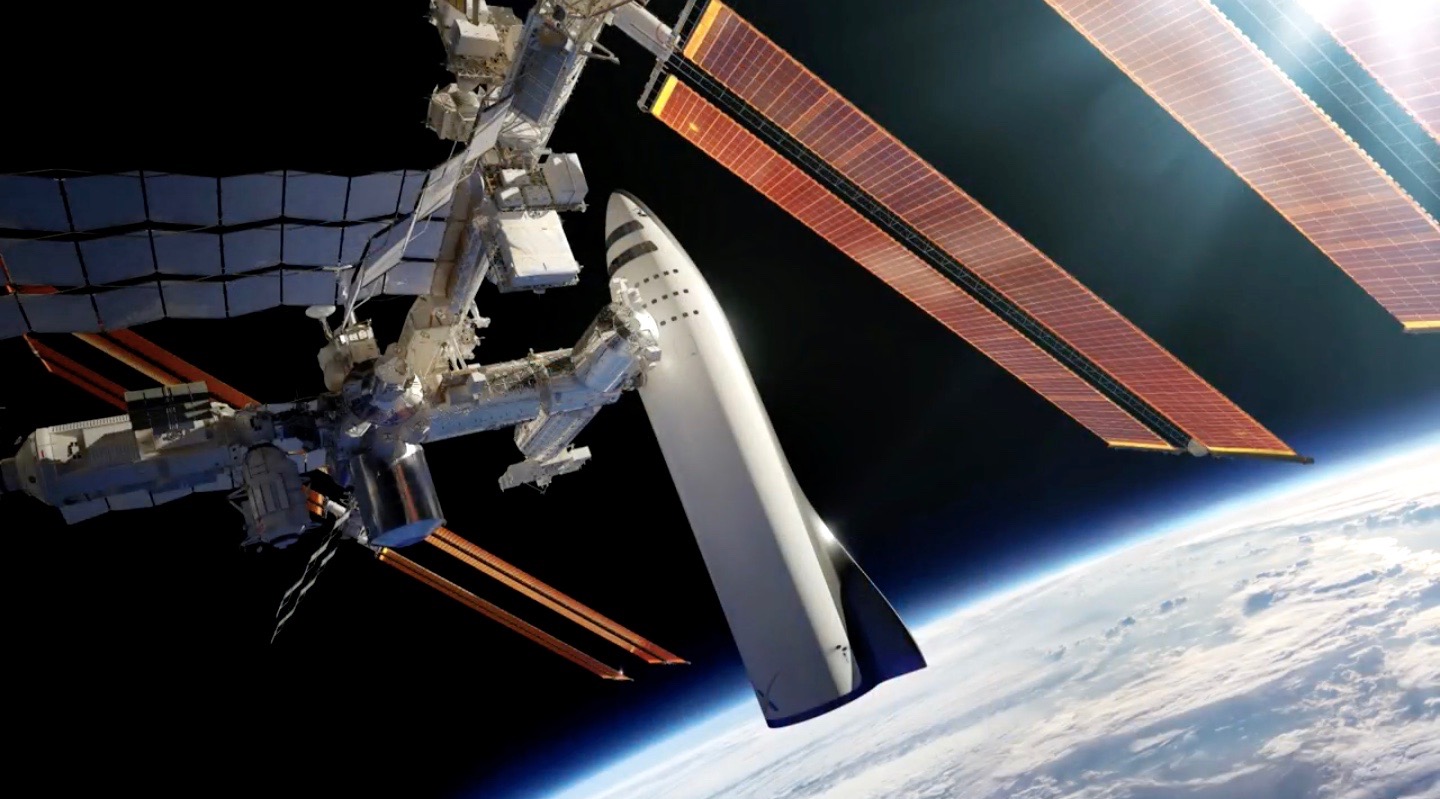
BFR Spaceship at the ISS
An artist's illustration of the BFR spaceship docked at the International Space Station.
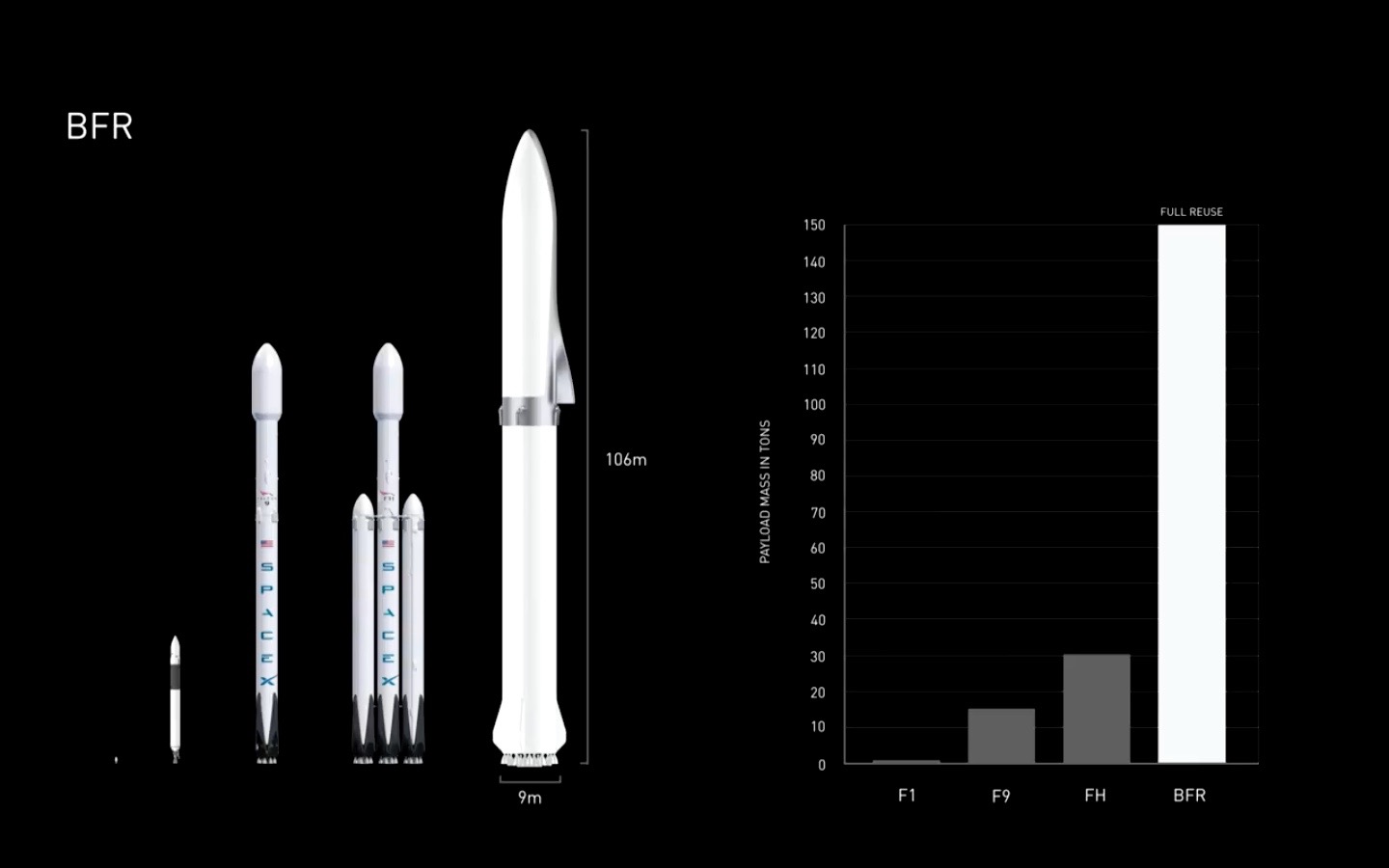
A Big Rocket
SpaceX's envisioned BFR is much bigger and far more powerful than the company’s other rockets.
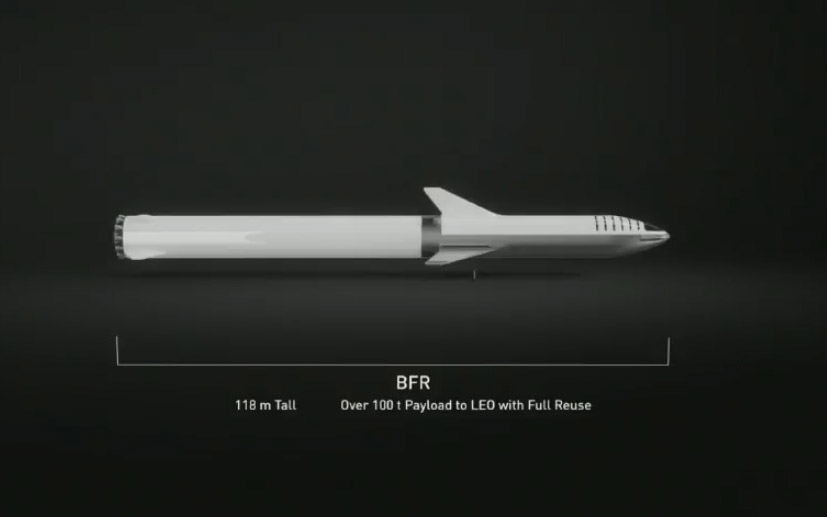
Big BFR
The BFR iteration was designed to be 387 feet (118 meters) tall, with the ability to carry payloads up to 100 metric tons all the way to the surface of Mars.
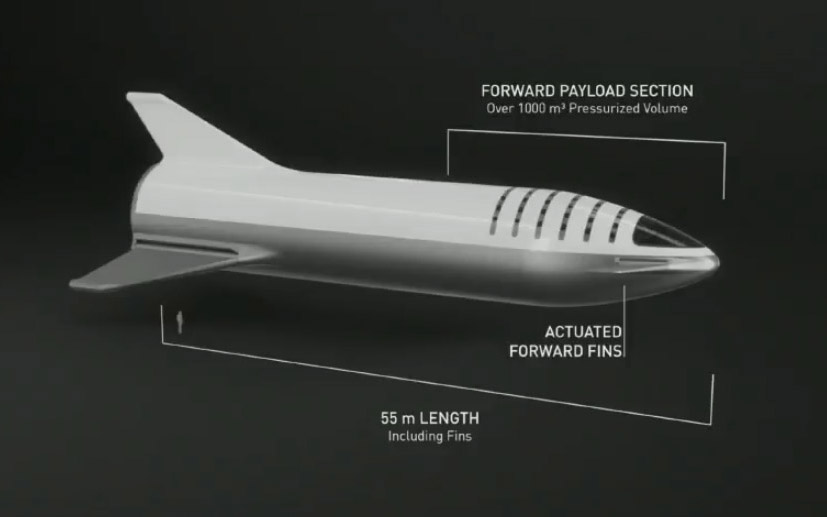
A Spacious Spaceship
The BFR's design was more spacious inside, fitting more than 35,000 cubic feet (1,000 cubic meters) of pressurized space inside. The payload section measured 180 feet (55 meters) long. That's more than 10 times the size of the space shuttle's living quarters.
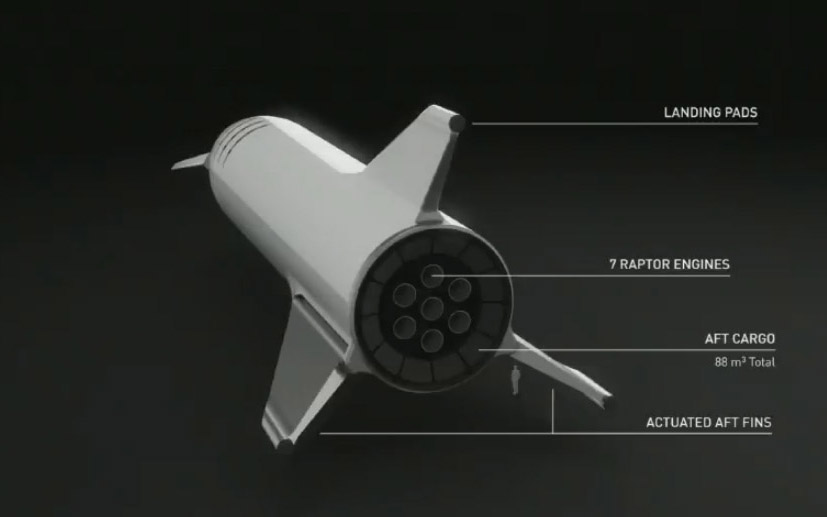
Steering the BFR
The 2018 BFR design had two actuated forward fins and three in the rear. (Elon Musk also referred to these features as "wings" or "fins.")
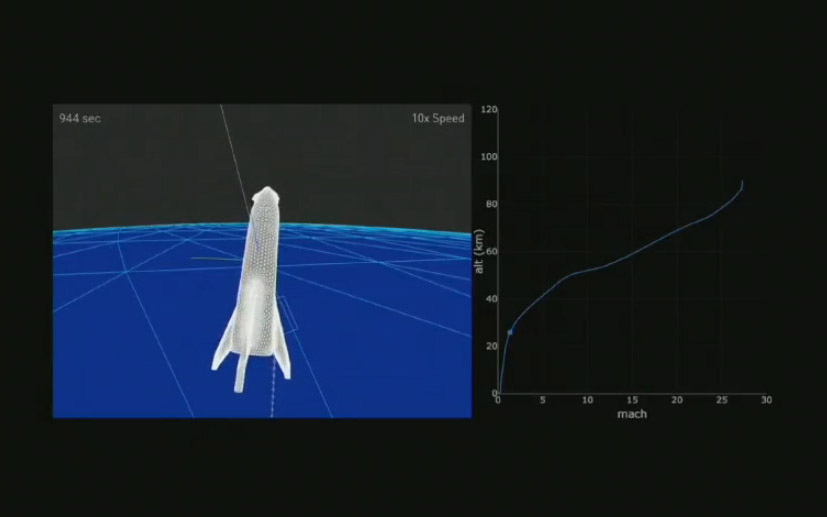
Landing the BFR
A screenshot of a landing simulation showing how the BFR will land. The rocket is designed to be able to land anywhere in the solar system, Elon Musk said when he unveiled the new design.
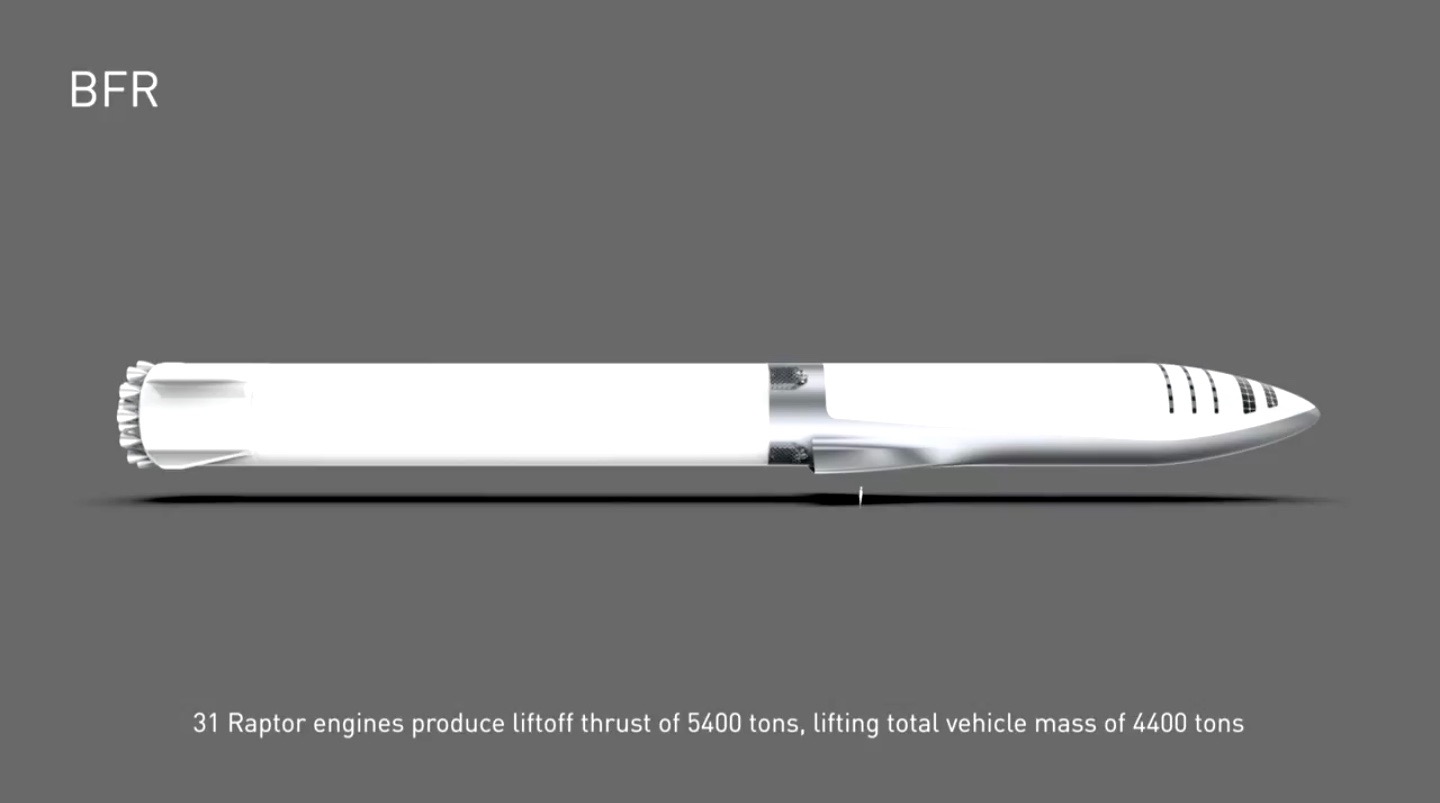
BFR from the Side
The BFR would be capable of lofting 150 tons of payload to low Earth orbit, SpaceX founder and CEO Elon Musk said.
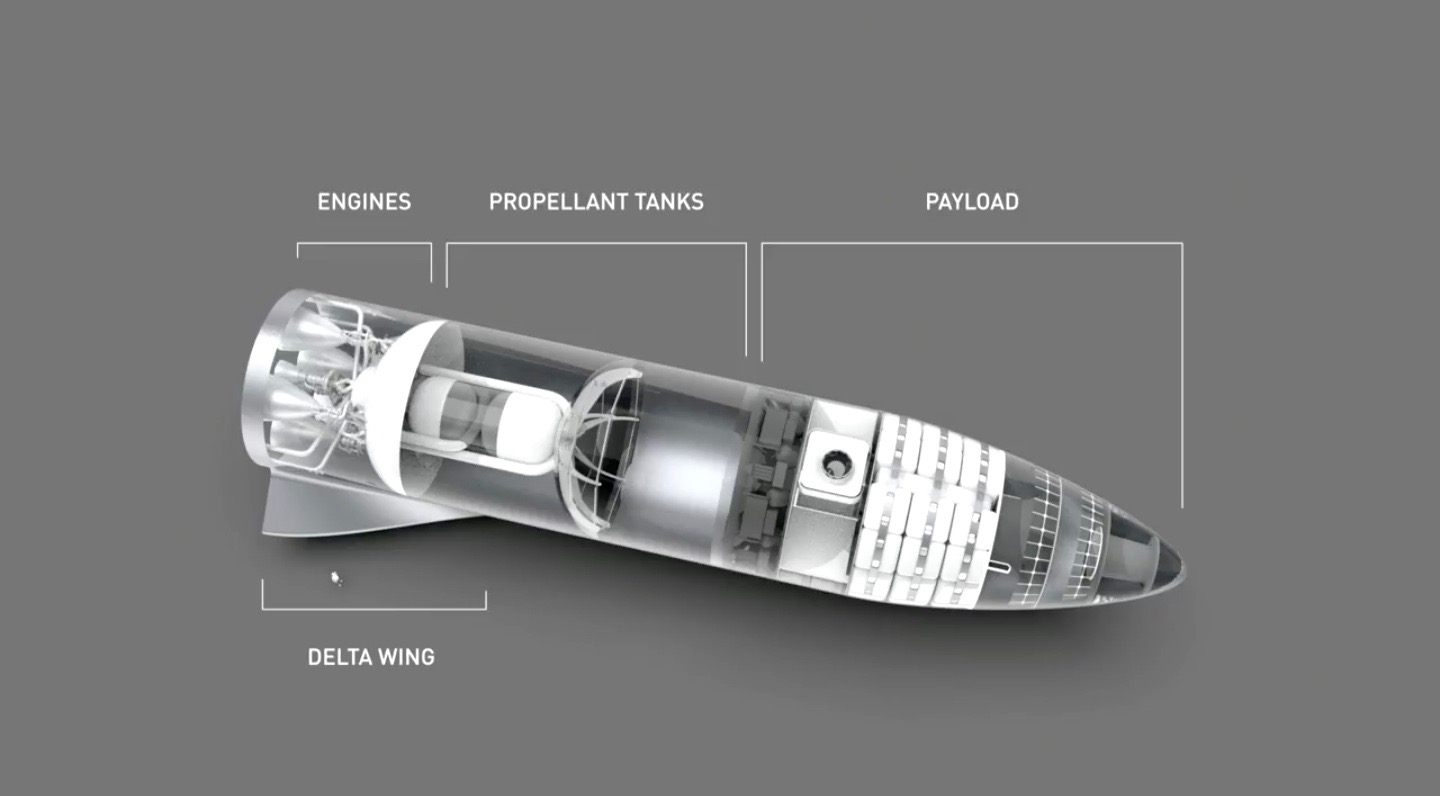
BFR Spaceship: Top View
The BFR spaceship's design features 40 cabins, each of which will likely house two to three people on a typical Mars trip.
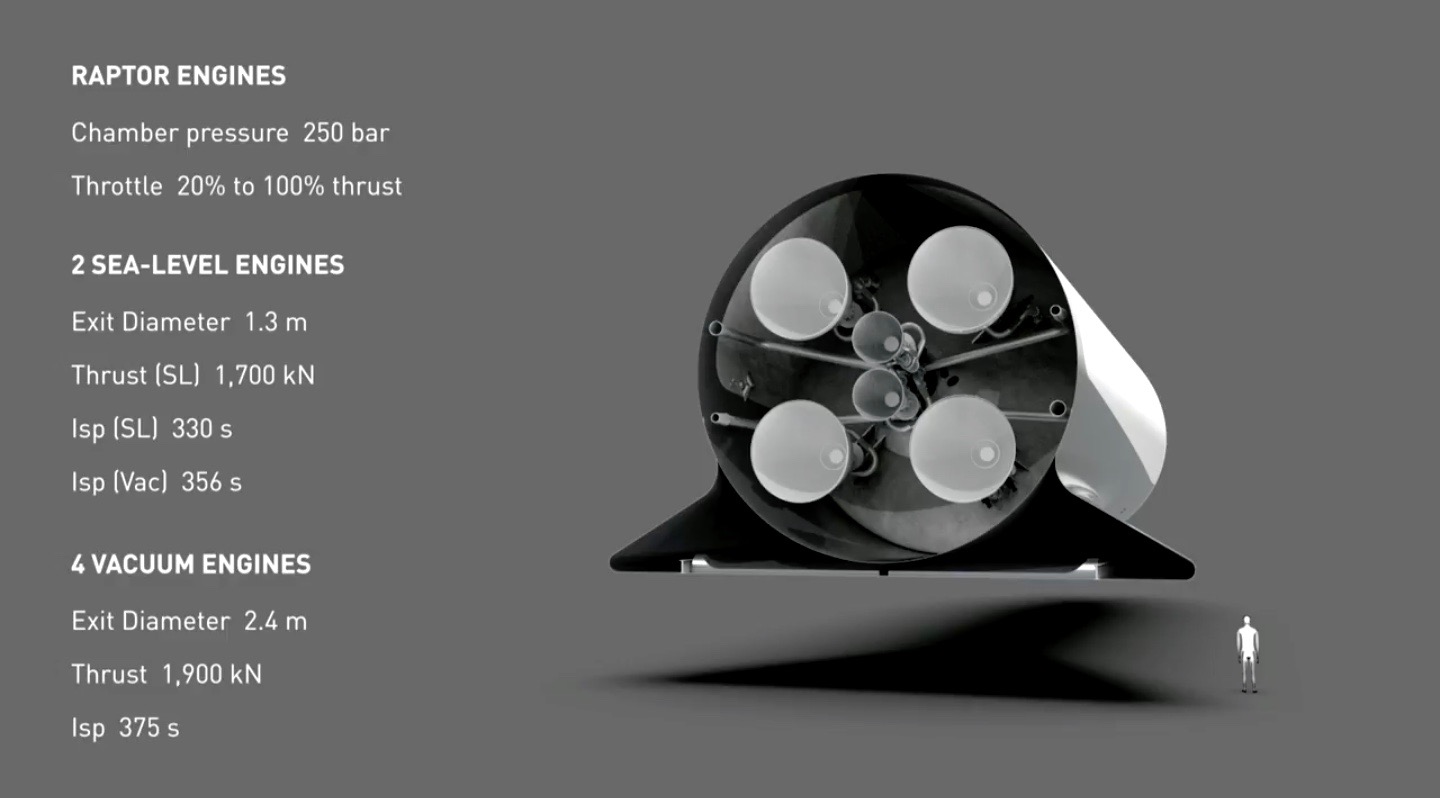
BFR Spaceship: Rear View
The BFR spaceship's six Raptor engines will allow it to reach Mars after a journey of three to six months.

Point-to-Point Travel on Earth
A giant SpaceX rocket launches from a floating platform near New York City carrying passengers bound for Shanghai in this still from a video animation depicting the potential for point-to-point travel on Earth with the massive spaceship.
- See the Evolution of SpaceX's Rockets in Pictures
- SpaceX Starhopper Rocket Prototype Aces Highest (and Final) Test Flight
- How SpaceX's Starship Will Help Establish a Mars Base
Follow us on Twitter @Spacedotcom or Facebook.

Get the Space.com Newsletter
Breaking space news, the latest updates on rocket launches, skywatching events and more!
Join our Space Forums to keep talking space on the latest missions, night sky and more! And if you have a news tip, correction or comment, let us know at: community@space.com.

Space.com is the premier source of space exploration, innovation and astronomy news, chronicling (and celebrating) humanity's ongoing expansion across the final frontier. Originally founded in 1999, Space.com is, and always has been, the passion of writers and editors who are space fans and also trained journalists. Our current news team consists of Editor-in-Chief Tariq Malik; Editor Hanneke Weitering, Senior Space Writer Mike Wall; Senior Writer Meghan Bartels; Senior Writer Chelsea Gohd, Senior Writer Tereza Pultarova and Staff Writer Alexander Cox, focusing on e-commerce. Senior Producer Steve Spaleta oversees our space videos, with Diana Whitcroft as our Social Media Editor.









